Bible Helps, Inc.
Publishers of Bible Teaching Literature

Mary and Martha: Friends of Jesus
By Harold S. Martin A Bible Helps Booklet No. 420
In this article we want to take a look inside a home that Jesus often visited. It is our purpose to meet some people who loved Jesus, and people whom He loved—the family of Martha and Mary and Lazarus.
The home of Martha and Mary was one of the homes in Bible times that was given to hospitality. Mary and Martha lived in Bethany, on the eastern slope of the Mount of Olives, about two miles from Jerusalem. Bethany was the starting point for the Palm Sunday procession.
There were two sisters and a brother who lived in the home which is the focus of our lesson. This was a home where love prevailed, but it was not without some quarrels and tensions. Luke tells us about a meal that was being prepared for Jesus. In the lesson Martha and Mary are the principal characters.
Martha wanted everything just right—the living room must be dusted, the drapes must be just so, and the flowers on the table must not clash with the colors of the table setting.
Mary seemed to care very little about such details. She didn’t mind disarranged cushions and things not always in their exact place. She preferred to sit and interact with the company than go to a lot of work to make a dainty meal.
Both women were kind and faithful disciples of Jesus, but their characters and temperaments differed.
The lesson has two primary centers:
- 1) The Supper: The visit of Jesus and His disciples (Luke 10:38-42)
- 2) The Funeral: The sickness and death of Lazarus (John 11:20-32)
1. The Supper: the Visit of Jesus and His Disciples (Luke 10:38-42)
Jesus felt a close bond with the family living at Bethany. A beautiful friendship existed between Jesus and the two sisters, and their brother Lazarus. Jesus not only visited the family, but He felt free to drop in at any time. The fact that He loved the family is stated three times in just one chapter of the New Testament—John 11, verses 3, 5, and 36.
On the occasion described in Luke 10, Jesus was traveling through the country with His disciples, most likely coming up from Jericho. He had just related the story of the Good Samaritan (the man who was robbed and left for dead along the Jericho Road). Jesus no doubt sent a messenger on ahead to inform His friends at Bethany that they could expect Him for supper that night. His disciples may have gone on to Jerusalem, or perhaps they too were included among the visitors who would drop in at Bethany. That is not clearly stated.
We can almost see Martha, when she received word that Jesus was planning to stop by; she was concerned about hospitality and generosity. She immediately went to work, beginning to prepare the meal. She sent one of her helpers to the market to get some extra food; she began to build a fire for cooking—and in the midst of the bustle of preparation, Jesus arrived.
Luke 10:38 says, “Now it came to pass, as they went, that he entered into a certain village; and a . . . woman named Martha received him into her house.”
Martha was the older of the two sisters, and the words “her house” indicate that she was the proprietor of the property. Martha welcomed Jesus into the home, and after the initial greeting, she hurried off to the kitchen to continue the preparation of the meal.
Verse 39 says, “And she had a sister named Mary, who sat at Jesus’ feet, and heard his word.”
When Jesus arrived, Mary soon found a place sitting at the feet of Jesus, drinking in His words of wisdom. Mary took advantage of this time with Jesus to hear what He had to say—and what He was teaching about the real issues of life here and hereafter. There is something tranquil in what Mary chose to do. Mary chose to hear about matters of eternal consequence.
In verse 40, we read, “But Martha (who) was cumbered about much serving, came to (Jesus), and said, Lord, dost thou not care that my sister hath left me to serve alone? Bid her therefore that she help me.”
Martha was disturbed by the fact that Mary seemed to have no concern about helping her to prepare and serve the meal—and in a mood of desperation, she came to Jesus and lamented the fact that Mary had left her with the work of food preparation. Martha said in essence, “Doesn’t it seem unfair to you that Mary just sits here while I do all the work?” Martha said to Jesus, “Bid her therefore to help me” (verse 40).
Martha wanted to give her guests the royal treatment, but she allowed her concern about getting the meal ready turn to irritation and complaint. She was motivated by hospitality and wanted to be a good hostess—but she became involved beyond her strength! And so she went to Jesus and said, “Don’t you care that my sister has left me do all the work? Tell her to help me!” The Greek construction of the words makes it clear that Martha anticipated a positive answer to her question. She expected Jesus to come to her aid. She was sure He would send Mary to help in the kitchen.
But in verses 41-42 Jesus responded: “(He) answered and said unto her, Martha, Martha, thou art careful and troubled about many things, but one thing is needful. And Mary hath chosen that good part, which shall not be taken away from her.”
The repeated use of Martha’s name indicates a sense of urgency. Jesus repeated the name of Simon (in Luke 22:31), and of Saul (in Acts 9:4). The phrase, “You are careful (anxious) and troubled about many things,” was saying in essence that Martha was disturbed about too many things which were not really important.
The “one thing needful” was something spiritual and eternal in nature, instead of those things that are merely material, physical, and social. Jesus said to Martha, “There is one thing in life worth being seriously concerned about—and that is the relationship of the human soul with God.”
Jesus is saying something like this: “Now Martha, stop and think about life; there are not really many necessary things. You are concerned about a lot of details, but you could live without them if you had to. On the other hand, there is one thing that you just can’t do without—and Mary has found it!”
The “one thing needful” is to take time to worship, and to hear about those things related to “the grace of God that brings salvation” (Titus 2:11).
The longer we live in this life, and the closer we come to the grave—the more we realize the importance of that truth. We can have health and money and lands and prosperity, but those things cannot really be called “needful.” The “many things” which most people are constantly striving for are not really necessities. For when we come to the end of life’s journey—the one thing that will count is whether or not we have accepted God’s offer of salvation through Jesus Christ.
Martha was feverishly going about many things that day, in order to please and properly entertain the guests who had arrived. Jesus was not especially interested in being fed a sumptuous meal, but was rather interested in reaching open hearts to hear His message of good news!
Martha was active and anxious to serve others. Mary was quiet and contemplative. Jesus did not condemn Martha for attempting to provide a good meal for her company—and neither did He praise Mary for her indifference toward the work of helping to prepare the meal. Jesus will not criticize a woman for keeping a neat house, nor will He especially bless a woman who sits around all day at His feet and does nothing else!
Martha could have prepared a less lavish feast, and Mary could have offered to help Martha—but the point is this: There must be a balance between a place for the busyness of life, and the need for meditation at Jesus’ feet. We must guard against focusing most of our activity on providing physical comfort, and neglecting the provision of food for the inner person.
Unfortunately, when things get busy, usually the first thing to go is time with the Lord. The programs of the church, and the unending needs of people around us, are so pressing—that reading and hearing the Word of God is sometimes neglected. It is a sin to get caught up with our busy schedules, and fail to take time daily to be alone with God and His Word. Most of us can use a little more Mary and a little less Martha in our lives.
2. The Funeral: the Sickness and Death of Lazarus (John 11:20-32)
Sometime after the event described in Luke 10, Lazarus (the brother in the family) became seriously ill, and his sisters sent word to Jesus, saying, “He whom thou lovest is sick” (John 11:3). And when Jesus had heard that Lazarus was sick, He stayed two days longer in the place where He was.
Jesus had a special love for the family, and because of His love for this household (John 11:5-6), He delayed going to their home. Jesus knew that Lazarus would be dead when He arrived in Bethany, but He also knew that He was going to do a great miracle. Jesus wanted all who would witness the miracle to know for sure that Lazarus was truly dead, and to be convinced that Jesus (the Son of God) had power over death.
In the warm climate of Palestine, a dead body would decompose rapidly, so the bodies of those who died were often buried the same day as the day of death. Lazarus had been dead four days by the time Jesus arrived. Jesus and His disciples were on the other side of the Jordan River when they received the news about Lazarus. The journey to Bethany meant traveling more than 20 miles (all by walking). The road to Bethany involved climbing from more than 1,000 feet below sea level, to an altitude of 2,700 feet above sea level. It took a long, long day of difficult up-grade walking to get from Jericho to Bethany.
When Jesus arrived, Martha was there to meet Him (verse 20), and she said, “Lord, if thou hadst been here, my brother had not died” (verse 21). Jesus said to Martha, “Thy brother shall rise again” (verse 23). Martha responded that she believed in a general resurrection on the last day. But Jesus said, “I am the resurrection, and the life: he that believeth in me, though he were dead, yet shall he live” (verse 25). Those who live and believe in Jesus will never die spiritually and eternally. Those who serve the Lord will not experience a loss of communion with God, even though the physical body dies.
In John 11, verse 27, Martha said to Jesus, “Yea, Lord, I believe that thou art the Christ, the Son of God, which should come into the world.” Remember that in Luke 10, which we examined earlier in this article, Martha was best known for being too busy to sit down and talk with Jesus—but here we see Martha as a woman of deep faith. It is likely that Martha (though busy with food preparation) took time to memorize Scripture while she stirred puddings and prepared soups!
Apparently Martha had also taken time to learn from Jesus and to know the basics of the Hebrew faith. Her statement of belief in verse 27 is exactly the response that Jesus wants to hear from all of us! “Yea, Lord, I believe that thou art the Christ, the Son of God, which should come into the world.” Martha, like Mary, was also a woman with a valid faith and a clear love for God.
Martha went quickly to call Mary, and Mary hurried to meet Jesus, and fell down at His feet, saying just what Martha had said before her, “Lord, if thou hadst been here, my brother had not died” (verse 32). When Jesus saw Mary weeping, He was deeply moved and He also wept (verse 35).
That was followed by the scene at the tomb, when Lazarus came forth at the mere word of Jesus. He was bound hand and foot with grave clothes. Jesus said, “Loose him and let him go”—that is, unwrap the grave clothes and let him go free. Surely there was a happy reunion that evening in the home of Mary and Martha at Bethany.
There are several practical applications gleaned from the lesson:
Lesson 1) We must not let the cares of this world take up too much of our attention, yet Jesus did not rebuke Martha for her zeal and her hard work.
Somebody had to prepare the supper. If Martha would have spent most of her time sitting at the feet of Jesus (like Mary did), Jesus and His disciples would have gone hungry that night. On the other hand, there is always the danger of putting too much emphasis on the busy side of life—which can lead to the neglect of the devotional and contemplative side. Jesus did not condemn Martha, but neither did He condone her activity. The serving was not bad, but she allowed the serving to get her all tensed up.
One writer says, “The Lord wants all of us to imitate Mary in our worship, and to imitate Martha in our work—blessed are those who achieve the balance!”
Lesson 2) Martha’s gift of hospitality is a gift which the Bible says is important. One of the qualifications for spiritual leaders is that they are to be “lovers of hospitality” (Titus 1:8). May God bless all thoughtful, busy, efficient housekeepers like Martha.
Lesson 3) Jesus saw Mary and the other mourners weeping, and He too wept. The words translated “weep” in John 11:33 and 11:35 are two different words.
Mary’s weeping (verse 33) was “a loud crying.” The weeping of Jesus (verse 35) simply means “to shed tears.” The heart of Jesus goes out in deep sympathy to those who know the ache of parting with loved ones at death. Jesus may have wept, however, not so much because Lazarus had died, but because He was going to call Lazarus back from the glories of the eternal world, into this life again—that is, to a life of grief and troubles.
Lesson 4) We notice how different the temperaments of true Christians may be. The two sisters in this lesson were faithful disciples.
- both had believed that Jesus was the Messiah
- both loved Jesus
- both welcomed Jesus into their home
But Martha was active, stirring, and impulsive—speaking out all she felt. Mary, by way of contrast, was quiet, still, contemplative, and had deep inner feelings. Just so, in our congregations today—we must not expect all believers in Christ to be exactly like each other. We must not think that others have not experienced God’s grace, just because their ways of doing things do not tally exactly with ours.
Lesson 5) It seems proper to provide for our families and to attend to the normal duties of life—but we must guard against letting our businesses, our daily callings, our household duties, and our interaction with society around us—become so demanding that our time for Bible reading is abridged, and the time for regular daily periods of family worship is skipped.
Lesson 6) Mary chose the good part, the one thing needful—which is salvation through repentance of sin, faith in Christ—and a commitment to follow Him in obedience.
That is the only thing which is absolutely needful, in order to be prepared for the life to come. Other things may be convenient, and helpful, and desirable, and useful, but there is one thing without which you cannot do—and that is saving faith in the Lord Jesus Christ.
* * * * * * * * * * * * * * *
The home of Martha, Mary, and Lazarus was a home which Jesus graced a number of times with His presence. It was also a home He blessed with His greatest miracle. The little home in Bethany did not escape from the trials and tragedies of life. Martha and Mary and Lazarus dealt with normal anxieties. There was sickness, and death, and grief. The presence of Jesus in the home did not exempt them from these things. But there was also a deep faith: “Yea Lord, you are the Messiah, the Son of God.”
How much is your home like the home described in our lesson? The presence of Jesus in your home will not remove the realities of life—but His presence will help you to live nobly through the crises that come—and to triumph over them! May God send special blessings upon your home in the days (and perhaps years) that may lie ahead.
She is Called Women of the Bible Study Vol. 2
Mary and martha, sitting at the feet of jesus.
By Elder Michelle Christy
The story of Mary and Martha in the Bible shows us two different approaches to following Jesus. In Luke 10:38-42, Martha works hard to welcome Jesus to her home. Her sister, Mary of Bethany, simply sits at his feet and listens. Both Mary and Martha serve, yet Mary understands the priority and necessity of choosing to abide with Christ. Sitting at the feet of Jesus prevents Mary’s service from becoming distracted and unhealthy.
Jesus, you call us to seek your presence and to serve the world in your name. Teach us to seek you wholeheartedly and to serve you without distraction or self-righteousness. Fill us with your love that we might bring it to a broken and hurting world. Amen.
Key Scripture
Luke 10:38-42 , John 11 , and John 12:1-7
“Now as they went on their way, [Jesus] entered a certain village, where a woman named Martha welcomed him into her home. She had a sister named Mary, who sat at the Lord’s feet and listened to what he was saying. But Martha was distracted by her many tasks; so she came to him and asked, ‘Lord, do you not care that my sister has left me to do all the work by myself? Tell her then to help me.’ But the Lord answered her, ‘Martha, Martha, you are worried and distracted by many things; there is need of only one thing. Mary has chosen the better part, which will not be taken away from her.’” – Luke 10:38-42
Introduction to Mary and Martha in the Bible
In our text, we find Jesus headed two miles east from Jerusalem toward the nearby village of Bethany. Jesus stops in Bethany where his friends Martha and Mary and their brother, Lazarus, live. John’s Gospel tells us that Jesus “loved Martha and her sister and Lazarus” (John 11:5). One commentator indicates that Mary and Martha may have been the most important and prominent women in Jesus’s life after his own mother. 1
If we consider the passage in its canonical order, we first meet Jesus’s friends here in Luke, and later in John 11 and 12. Mary positions herself at the feet of Jesus in each of these stories. Luke says Mary “sat at the Lord’s feet and listened to his teaching.” John 11 says she falls at Jesus’s feet. Mary anoints and wipes the feet of Jesus in John 12. The connection between Mary and Jesus’s feet is significant.
As Mary sits at Jesus’s feet, Martha finds herself “distracted by her many tasks” (Luke 10:40). Consumed by worry and anxiety, Martha demands that Jesus tell Mary to help her. Feeling justified, Martha receives an answer from Jesus she surely did not anticipate. Jesus commends Mary for sitting at his feet, inviting Martha to consider the way in which she serves.
Digging Deeper: Mary and Martha as Disciples of Jesus
The significance of mary at the feet of jesus.
Mary “sat at the Lord’s feet and listened to what he was saying” (Luke 10:39). Without understanding the cultural context, we might miss the profundity of Mary’s posture. In Jewish tradition, “sitting at the feet” was what a disciple did. In Acts 22:3, the apostle Paul tells us that he was educated “at the feet of Gamaliel.” Gamaliel, an esteemed rabbi in Israel, trained Paul who would later self-describe as a “Pharisee of Pharisees” (Acts 23:6; cf. Philippians 3:5).
Mary sits at the feet of her rabbi, Jesus. Since this was the posture assumed by a disciple, we can safely conclude that Mary was a disciple of Jesus. Mary, a woman in a male-dominated world, yet a disciple! Scandalous and profound, indeed! Jesus’s affirmation of Mary’s posture reveals his acceptance of Mary as a legitimate disciple. Jesus welcomes women to learn at his feet.
Learning from both Mary and Martha
At first glance, we might assume this story invites us to be either a Mary or a Martha. We ask, “Does a disciple sit at Jesus’s feet or serve?” While this may seem like the main point the passage is making, a clue to a deeper meaning may lie in a small word in verse 39 that is often left out in translation: the Greek word “kai,” translated into English as “also.” A more literal, word-for-word translation would read like this: “And she had a sister called Mary, who also having sat at the feet of the Lord, was listening to his word.”
What might “also” be referring to here? We might consider it to mean that Mary also served. Or, perhaps the word communicates that Martha “also”—just like her sister Mary—sat at Jesus’s feet. This could mean that, in general, they both sat at Jesus’s feet when he came around, but this time, it was only Mary. Either way, Jesus does not condemn Martha, nor does he pit the sisters against each other. Jesus seizes a teachable discipleship moment.
Disciples are not called to either sit or serve but are called to both sit and serve.
Was this distracted state Martha’s characteristic way of serving? Perhaps, given Jesus’s pointed answer to her demand. The word “distracted” means to be drawn away, driven about mentally, over-occupied. Very literally, it means to be pulled and dragged in different directions. Martha’s distraction leads to a sense of aloneness and self-righteousness, to self-focus and questions about Jesus’s care.
Martha’s distraction leads to five Ds:
- Disbelief – Martha asks, “Do you not care…?”
- Defensiveness – Martha defends her place: “My sister has left me to serve alone.”
- Dismissiveness – Martha depersonalizes Mary as “my sister,” as though Mary is not even there.
- Demands – Martha flat out says to Jesus, “ Tell her to help me.”
- Desperation – Martha attempts to control the situation—and Jesus—with her comment about being alone.
Martha’s distracted serving led her to a place she did not want to go. Martha surely regrets the way she speaks to Jesus. We hear him lovingly acknowledge the state of her heart when with tender repetition Jesus says, “Martha, Martha.” Jesus invites her to consider a way of serving that is without distraction or self-righteousness. In Martha’s mind, she seems to have no choice but to serve alone with much worry. Jesus reminds her that she does have a choice. Martha can spend time doing the one “needed” and “necessary” thing from which all else flows.
She Is Called and We Are Called
Jesus did not acquiesce to Mary’s sitting at his feet. He unequivocally applauds it. Jesus affirms Mary as his disciple as well as her choice to abide with him. Jesus declares that “one thing” is needed as his disciple: a kind of attentiveness to Jesus that glories in his presence, a serving that bears eternal fruit.
Not long after visiting Mary and Martha, Jesus uses a vine as a teaching metaphor (John 15). As he walks through the grapevines of the Kidron Valley, Jesus emphatically endorses a choice like Mary’s. He instructs the disciples how to live without his physical presence. The key, he says, is abiding in him and allowing his words to abide in them. For apart from Jesus, they will not be able to do anything of kingdom value. It is to the Father’s glory that they bear much fruit. Mary models that fruit will not be born apart from remaining in Jesus.
Yet and still, each of us needs to be a Mary and a Martha. As disciples, we are called both to sit and to serve. We are called both to abide and to bear fruit. We sit and hear Jesus’s word. We bow at his feet in worship. We kneel before him in prayer. In all these ways, we follow after Mary’s example at the feet of Jesus. It is in this place that we find the discernment, clarity, wisdom, strength, and courage to bring Christ’s loving presence into the world.
In our desire to follow God’s call by serving him with everything we have, we can easily find ourselves overcommitted, “worried and troubled about many things.” Distracted. In a culture that exalts multitasking and a “we-can-do-it-all” mentality, we have a teacher who invites us to learn his way and adopt his priorities. This one, who Paul says “ascended on high … and gave gifts,” gives each of us gifts for such a time to best express God’s love in our appointed generation (Ephesians 4:8, NIV).
We each have our uniquely given expression in the body of Christ. If we are all trying to do it all , we are driven to distraction. Instead, we remain and abide in Jesus by sitting at his feet. We receive and absorb his love. We hear Jesus’s word, and these words remain in us. For apart from him, we can do nothing (John 15:5).
Related: Finding Ways to Accept God’s Gift of Sabbath Rest
Friends, how will you choose to serve? Many of us find ourselves mostly like Martha. We can learn from Mary. Distraction is sometimes translated as “cumbered.” “Cumbered” speaks to hindrance, hampering, and obstruction. How might our hampered and hindered lives stand as an obstruction to the lasting fruit Christ desires to bear in and through us? What might it look like for us to abide at the feet of Jesus and to receive his invitation to be un encumbered by the weight of self-imposed responsibility, anxiety, and control?
Jesus says, “Come to me, all you that are weary and are carrying heavy burdens, and I will give you rest. Take my yoke upon you, and learn from me; for I am gentle and humble in heart, and you will find rest for your souls. For my yoke is easy, and my burden is light” (Matthew 11:28-30).
How fitting are these words! The one who sits at the rabbi’s feet learns the rabbi’s yoke. The rabbi’s yoke was a way of living and being in the world. Jesus’s yoke is easy and light. With Jesus’s yoke, there is work and there is rest. Jesus invites you: “Get away with me and you’ll recover your life. I’ll show you how … Walk with me and work with me—watch how I do it. Learn the unforced rhythms of grace” (Matthew 11:28-30, The Message ).
Discussion Questions
- Do you most identify with Martha or Mary?
- What tends to distract and pull you away from Jesus? What is the result when you are distracted with much serving?
- How is “sitting at Jesus’s feet” viewed by the culture and world around us? How about by the Church?
- What surprised you in this Bible study session?
- What do you hear the Spirit saying to you/your family/your church/your community?
[1] Ben Witherington, Women and the Genesis of Christianity (Cambridge University Press: Cambridge, 1990), 99.
Michelle Christy is a speaker who passionately and faithfully leads others to personal and transforming encounters with God through the study of his Word. She brings almost 25 years of experience to her inspirational speaking and Bible teaching ministry, Defining Word. Michelle has spoken nationally and internationally, and thousands have experienced her sincere and natural style inviting them to a deeper relationship with God in Christ Jesus. Her Bible studies include The Goodness of God in the Waiting Rooms of Life, Defining Words for Daddy’s Daughters, and When Jesus Sees. For the last two years, she has also been serving as director of adult discipleship at Trinity Reformed Church in Orange City, Iowa. Michelle’s husband and her three adult children describe her with one word: intentional. Michelle is learning to be less of a striver and more of an abider.
Continue this Bible study as a book
Get your copy of the she is called women of the bible study vol. 2.

This Bible study is from the second book in the Women of the Bible Study Series. Get the book to discover how women like Mary and Martha, Abigail, and Junia embraced God’s call for their lives.
© Reformed Church Press
- Travel/Study
BIBLE HISTORY DAILY
Martha: a remarkable disciple.
One of Jesus's most devoted followers
The New Testament mentions Martha, a disciple of Jesus, three times (Luke 10:38–42; John 11:1–44; 12:2). Her actions, statements, and profession of faith reveal a remarkable woman who grows into her role as one of Jesus’s most devoted followers.

This mid-17th-century painting by the Dutch artist Johannes Vermeer depicts Jesus’s visit to the home of Martha and Mary, as described in Luke 10:38–42. Image in the public domain, by Google Art Project.
Based on Luke 8:1–3, Martha is arguably one of the women of means who supported Jesus and the Twelve, his co-traveling, male disciples. She, her brother, and sister illustrate the concept of hospitality demonstrated by the parable of the Good Samaritan (Luke 10:25–37). Later, while experiencing her brother’s sudden illness and death and her keen disappointment regarding Jesus’s prolonged absence, Martha declares that Jesus is the Son of God (John 11:27).
Her interactions with Jesus provide added insights on his character. They show a woman of independent thought and bold assertions, one meriting study and shaping theology.
Hospitality (Luke 10:38–42)
The scene is Bethany, a two-mile walk east from Jerusalem. In the last year of his ministry, Jesus left Galilee and relocated to Judea. An entourage accompanied this itinerant preacher.
“Martha opened her home to him” (Luke 10:38) (italics added). Perhaps Martha was a widow with a large compound able to accommodate many guests.
It was unusual that siblings lived together; none seemed eager to marry. The family, especially the sisters who entertained a single man, broke the rules (Camille 2007:44–45).
Jesus chooses to “hang out” with this trio (Honeycutt 2019:10). He loves Martha, Mary, and Lazarus (John 11:5). Among them, he sheds the stress of his ministry’s long hours and its harassment from religious authorities.
Displaying an eclectic schedule, Jesus shows up, perhaps unexpectedly. Traditional norms of hospitality (established already in Genesis 18) demanded that guests—in this case, Jesus and the dozen or more who accompanied him—be fed, protected, honored, and housed.
Martha starts cooking. But Mary sits at Jesus’s feet, enthralled (Luke10:39). Listening to him teach, Mary ignores any responsibility for food preparation as well as traditional norms of gender separation. Jesus does not send her away.
Meanwhile, Martha’s irritation rises. Interrupting Jesus, she demands, “Lord, don’t you care that my sister has left me to do the work by myself? Tell her to help me!” (v. 40).
Martha ruins her own dinner party! She forces her honored guest to arbitrate a seemingly ongoing squabble: sibling household duties.
However, Jesus makes it a brilliant teaching moment. He acknowledges Martha’s service to him and others but names a detracting habit: “Martha, Martha, you are worried and upset about many things” (v. 41).
Jesus then recognizes Mary’s different service: listening. He surprisingly states Mary has chosen “what is better.” Adjudicating Martha’s demand, he decides Mary’s choice “will not be taken away from her” (v. 42).
Jesus thus re-organizes traditional biblical hospitality around himself. Hospitality now includes service to him by doing and listening.
He thereby continued his pattern of changing established traditions. Earlier, he had re-ordered the family around himself, declaring that whoever does God’s will is “my brother, and sister, and mother” (Mark 3:31–35); and, likewise, the Sabbath, declaring “the Son of Man is Lord of the Sabbath” (Matthew 12:8).
However, Jesus’s teaching contains this sincere compliment: Jesus wants Martha’s company more than he wants her splendid meal.
It is also important to note that the doubling of Martha’s name (v. 41)—“Martha, Martha…”—presents interesting canonical parallels. Name repetition, a biblical rarity, denotes emphasis and a divine encounter. Consider, for example, God’s call to Abraham not to lay a hand on Isaac (Genesis 22:11), the call to Moses from the burning bush (Exodus 3:4), and Jesus’s appearance to Saul on the Damascus road (Acts 9:4).
Faith (John 11:1–44)
Martha’s second appearance verifies her importance. Often called the “Raising of Lazarus” the John passage is better seen as conversations between Jesus and his disciples and, individually, with Martha and Mary (Blessing 2002:399).
Through the sisters’ message, Jesus learns that Lazarus, “the one you love” (John 11:3), is ill. Obviously, Jesus will come quickly! But Jesus delays. The sisters must have watched the road ceaselessly, listening acutely.
Lazarus worsens, dies, and is buried. Jesus remains silent, absent, and mysterious.
Jesus arrives during the mourning period. He stops outside Bethany. Martha hurries to him. Foregoing a greeting, she says—bluntly and perhaps accusingly—“Lord, if you had been here, my brother would not have died” (v. 21).
Jesus answers Martha, likewise, directly: “Your brother will rise again” (v. 23). Thinking eschatologically, Martha parrots a prevailing principle, that “he will rise again in the resurrection at the last day” (v. 24). However, Jesus speaks prophetically about what will happen shortly at Lazarus’s tomb.
He honors Martha with one of his seven “I am” statements, “I am the resurrection and the life,” and challenges her, “Do you believe this?” (vv. 25–26).
His directness, piercing through her bewilderment and hurt, necessitates a response.
Without hesitation, Martha answers: “Yes, Lord. I believe that you are the Christ, the Son of God, who was to come into the world” (v. 27).
Martha’s four-fold confession of faith ranks alongside Peter’s confession (Matthew 16:16; Mark 8:29; Luke 9:20).
Returning home, Martha tells Mary that “the Teacher” (evidently the sisters’ pet name for Jesus) asks for her. Going quickly to him, Mary repeats Martha’s words but her mannerisms differ. She greets Jesus by kneeling and weeping (John 11:28–29, 32).
With Martha, Jesus was no-nonsense, channeling her grief by focusing her attention on himself. With Mary, deeply moved, he weeps (vv. 33–35).
Onlookers accompany them to the tomb. Riveting every eye, Jesus commands that the stone be taken away. The ever-practical Martha states the obvious: “By this time there is a bad odor, for he has been there four days” (vv. 38–39).
All stare at the darkened cave. Jesus shouts: “Lazarus, come out!” (v. 43).
And he does!
In one of scripture’s most remarkable events, a shrouded form hobbles forth. No doubt all are astonished, speechless. Jesus breaks the silence by recognizing the obvious: bound Lazarus cannot loose himself. Jesus commands, “…let him go” (v. 44).
Resolution (John 12:2)
Shortly thereafter, in scripture’s final mention of the trio, a smell different from death but associated with burial occurs. Six days before Passover, Martha serves at a dinner in Jesus’s honor. Lazarus reclines at the table with Jesus. Mary takes nard and opens it; a sweet smell fills the house. Mary pours it on Jesus’s feet and wipes them with her hair (John 12:2–3).
The scene shows growth by its silence. Martha busies herself with serving; she offers no comment when Mary serves Jesus differently. Hospitality issues seem resolved.
However, Mary again receives criticism, this time from Judas Iscariot. Jesus again defends her, praising her extravagant gift as “perfume for the day of my burial.” The next day, Jesus enters Jerusalem in triumph and to acclaim (John 12:4–8, 12).
Scripture heavily documents Jesus’s last week. Jesus celebrates Passover on Thursday with his disciples in an upper room in Jerusalem . Afterward they go to the Mount of Olives (Luke 22:7–46).
Perhaps Jesus was scheduled to return to Bethany. One can picture Mary, Martha, and Lazarus, their compound aglow with oil lamps, waiting at the gate, watching the Jerusalem road.
Jesus never comes. He is seized, taken to the high priest’s house, tried before the council of elders, sent to Pilate then Herod, and sentenced by Pilate . On Friday morning he is crucified and dies that afternoon (Luke 22:47–23:49).
The sibling trio are not mentioned at the cross, the tomb, or later after the resurrection as among the 120 who were praying (Acts 1:12–14). What happened?
Perhaps when learning of Jesus’s sentence, they fled, hearing that the chief priests desired to kill Lazarus (John 12:9–11).
Early church lore says they were captured and put in a leaking boat without oars. The boat made it either to Cyprus or Gaul. One account says Lazarus became Bishop of Cyprus and died, peacefully, 30 years later (“St Lazarus,” 1956:IV:576). His feast day is December 17.
According to another account, Martha evangelized Tarasçon (in modern day southern France), where relics associated with her were enclosed in a shrine (“St Martha,” 1956:III:205). Her feast day is July 29. Early church thinking merges Mary of Bethany and Mary Magdalen into one person. Mary Magdalen’s feast day is July 22 (“St Mary Magdalen,” 1956:III:161).
Kamila Blessing, “John,” in The IVP Women’s Bible Commentary , C.K. Kroeger & M.J. Evans, eds. (Downers Grove, Ill: InterVarsity Press, 2002), pp. 584–605.
A. Camille, “Catfights of Biblical Proportions,” US Catholic 72.7 (2007), pp. 43–45.
F.G. Honeycutt, “Jesus Wept—but Why? The Savior in a House of Affliction,” Christian Century 136.13 (2019), pp. 10–12.
“St Lazarus,” Butler’s Lives of the Saints , Volume IV (New York: P.J. Kenedy, 1956), pp. 576–577.
“St Martha,” Butler’s Lives of the Saints , Volume III (New York: P.J. Kenedy, 1956), pp. 205–206.
“St Mary Magdalen,” Butler’s Lives of the Saints , Volume III (New York: P.J. Kenedy, 1956), pp. 161–163.

Dr. Robin Gallaher Branch serves as an adjunct professor at Christian Brothers University in Memphis, Tennessee, and in a research capacity at North-West University in Potchefstroom, South Africa, where she did her Fulbright Fellowship in 2002–2003. She is the author of numerous academic articles and two books, Six Biblical Plays for Contemporary Audiences (Cascade 2016) and Jeroboam’s Wife: The Enduring Contributions of the Old Testament’s Least-Known Women (Wipf & Stock 2018).
Read more by Dr. Robin Gallaher Branch about women in the Bible:
Deborah in the Bible
Judith: A Remarkable Heroine
Judith: A Remarkable Heroine, Part 2
Anna in the Bible
Tabitha in the Bible
This article was first published on Bible History Daily on June 21, 2021.
Related Posts
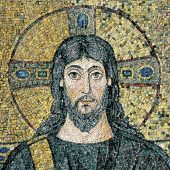
Did Jesus Exist? Searching for Evidence Beyond the Bible
By: Lawrence Mykytiuk

Who Was Moses? Was He More than an Exodus Hero?
By: Biblical Archaeology Society Staff

OnSite: The Via Dolorosa
By: Nathan Steinmeyer
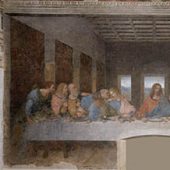
Jesus’ Last Supper Still Wasn’t a Passover Seder Meal
By: Jonathan Klawans
1 Responses
Yet another example of the ‘experts’ misreading a scripture passage without understanding the times. Bethany was the ‘house of the poor’ and hence established by the Essenes as a village of, what today we would call, almshouses. After Lazarus died the mourners not only included the local women, but also the Jewish leaders from Jerusalem (John 12:19) [unfortunately most translations misrepresent the language of John]. Now! would you expect the members of the Government to come and mourn you? Of course not, unless you are an important person in your community. Lazarus was the most important person in the village. He was their Torah teacher. Jesus is referred to as the Teacher by Martha. A typical phrase of ultimate honour in the Essene community. This passage needs further study to get the full meaning.
Write a Reply or Comment Cancel reply
Your email address will not be published. Required fields are marked *
Recent Blog Posts
Must-read free ebooks.
50 Real People In the Bible Chart
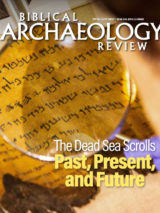
The Dead Sea Scrolls: Past, Present, and Future

Biblical Peoples—The World of Ancient Israel

Who Was Jesus? Exploring the History of Jesus’ Life
Want more bible history.
Sign up to receive our email newsletter and never miss an update.
By submitting above, you agree to our privacy policy .
All-Access Pass
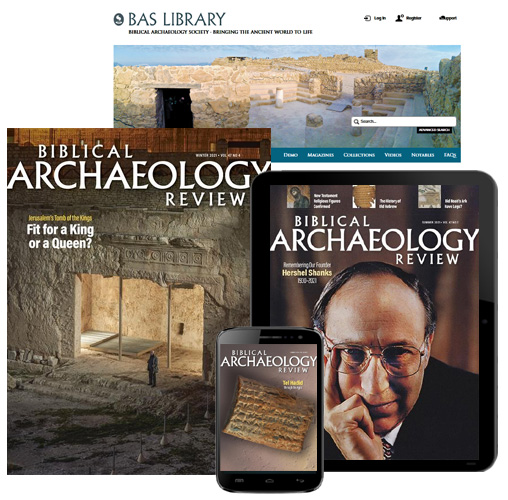
Dig into the world of Bible history with a BAS All-Access membership. Biblical Archaeology Review in print. AND online access to the treasure trove of articles, books, and videos of the BAS Library. AND free Scholar Series lectures online. AND member discounts for BAS travel and live online events.
Signup for Bible History Daily to get updates!

Martha & Mary Gospel Women
- 1st century Palestine
Jesus visits Martha & Mary
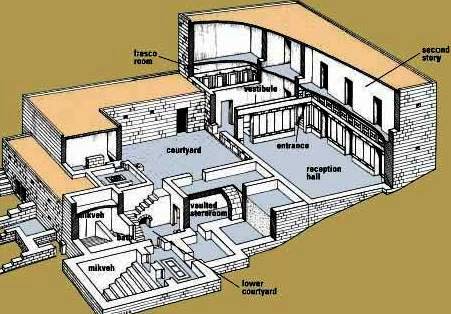
House plan of a well-to-do family in 1st century Jerusalem; the house of Martha and Mary would have been smaller, but built along a similar plan
Martha and Mary were two sisters who offered hospitality to Jesus and the people traveling with him.
They had a brother, Lazarus. The three young people were friends of Jesus. They behaved with him in a natural way, speaking openly about what they thought. Jesus, who was quite capable of overwhelming people with his presence, was informal and easy in their company.
This was important for a man like Jesus. People who are held in high esteem, as Jesus was, are often isolated , even though they are at the center of the crowd. Luke 10:38-42
Leonardo da Vinci captures this isolation in his painting of The Last Supper (below): Jesus is sitting in the middle of a table with his friends all around him, but he seems alone , as those dearest to him lean away from him, separating themselves from him as they will do later, when he is arrested and faces death.
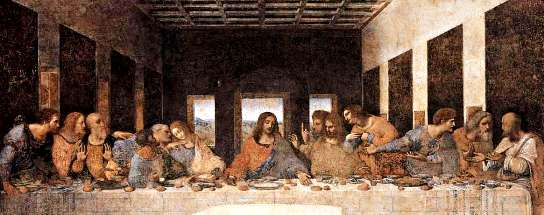
The Last Supper, Leonardo da Vinci
Who were Martha and Mary?
We know little about the background of Martha, Mary and Lazarus.
- They may have been well-to-do orphans who had the management of their own lives, since there is no mention of their parents. Moreover the eldest of the three, Martha, appeared to be in control of the household .

Read what modern writers say about Martha & Mary
- They appeared to have no occupation . But Mary could afford to buy a very expensive perfume called nard . It was a special gift, not an everyday item, but it showed they were people of means .
- None of the three appeared to be married . This was unusual in Jewish society, where people were usually married before the age of 20.

- In any case, they seem to have been young, comparatively well-off, independent, and intelligent .
A meal with Jesus
The first story about them happened in a town near Jericho , which is between Galilee, where Jesus came from, and Jerusalem , where he died.
Jesus visited their house. Martha prepared food for the guests; Mary sat and listened to Jesus.
What did they eat?
The main meal was taken in the evening. It might consist of a lentil stew seasoned with herbs like cumin or coriander. It was served with cheese made from sheep or goats’ milk, olives, onions and bread. Fruits included fresh figs and melon, as well as dried pomegranates and dates – dried fruits were a staple item in the Middle East. Wine, water, and curdled milk similar to liquid yogurt accompanied the meal. An Ancient Kitchen: What People Ate
‘Now as they went on their way, he entered a certain village, where a woman named Martha welcomed him into her home. She had a sister named Mary, who sat at the Lord’s feet and listened to what he was saying.
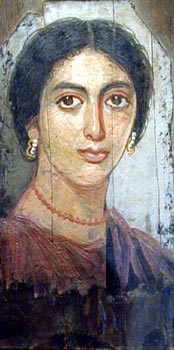
But the Lord answered her “Martha, Martha, you are worried and distracted by many things. There is need of only one thing. Mary has chosen the better part, which will not be taken away from her”.’ Read Luke 10:38-42
The two women obviously had complementary personalities – this is common in families.
- Martha was a doer , a capable young woman who organized and ran a fairly large household.
- Mary was a thinker , interested in ideas.
Martha objected to the fact that she had to work while Mary sat and listened. Jesus said that Mary had made the better choice.
What’s the meaning of this story?
- Mary ‘sat and listened’ . This was the usual posture of a disciple of any teacher in the ancient world. But disciples were usually male, so Mary must have been quietly breaking the rule that reserved study for males, not females .
- Her sister Martha was not merely asking for help. She was demanding that Mary keep to the traditional way of behaving.
- Jesus had previously encouraged the idea of service among his followers, so he did not say that Martha’s role of service was unimportant. This would have gone against all his other teaching. What he did say was that being a disciple, and learning about the ideas he was explaining, was even more important.
See this scene at Bible Paintings of Martha and Mary ‘. Martha is in a well-stocked 16th century kitchen, and is remonstrating with her sister Mary. They have a lot of guests – can’t Mary come and help with the preparations of food? Mary hardly hears her sister, so focused is she on the face and words of Jesus.’
Lazarus dies. Martha & Mary turn to Jesus.
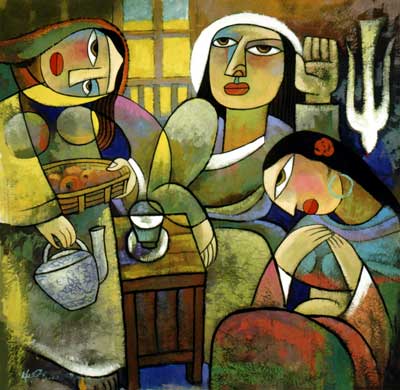
Jesus with Martha and Mary, Bible women. Painting by He Qi.
John 11:1-44 A second story about Martha and Mary happened in the town of Bethany, a small town near Jerusalem but separated from it by the Kidron Valley (see map of Jesus’ visits to Jerusalem ). It was about three kilometers east of the city, a comfortable walk for people at that time.
Lazarus was very ill, so Martha and Mary sent a message to Jesus, asking him to come. Jesus received the message, but put off coming for two days. In the meantime, Lazarus died of his illness.
The house went into mourning. As was the custom, a continual stream of friends and relatives came to comfort Martha and Mary, and to mourn for Lazarus.
There were strict rules about what could and could not be done after a death in the family. After the funeral,
- the family of the dead person stayed at home for seven days , sitting barefoot on the floor or on a low bench
- they did not wash themselves or their clothes, or do any work.
- they did not cook , but were given food by relatives. (See ‘ Major Events in Women’s Lives ‘ for further information on death and burial in ancient Jewish culture.)
What happened when Jesus arrived?
When Jesus eventually arrived, Lazarus had already been buried in the tomb for four days.
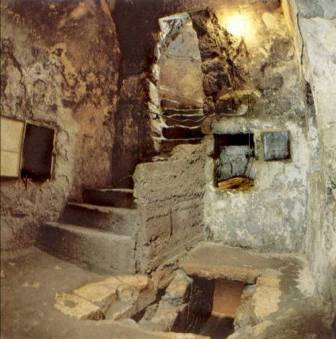
Present-day interior of the tomb said to have belonged to Lazarus
The length of time, four days, is important . It means that the custom of inspecting the body three days after burial, to make sure that the person was dead, had already been carried out.
So Lazarus was not merely unconscious, as modern skeptics suggest . This point is driven home by Martha in verse 39, when she described the stench of the rotting body.
As Jesus approached, Martha went out to meet him on the road. She reproached him for being so long in coming.
‘When Martha heard that Jesus was coming, she went and met him, while Mary stayed at home.
Martha said to Jesus “Lord, if you had been here, my brother would not have died. But even now I know that God will give you whatever you ask of him”. Jesus said to her “Your brother will rise again”. Martha said to him “I know he will rise again in the resurrection on the last day”.
Jesus said to her “I am the resurrection and the life. Those who believe in me even though they die, will live, and everyone who lives and believes in me will never die. Do you believe this?”
She said to him “Yes Lord, I believe that you are the Messiah, the Son of God, the one who is coming into the world”.’ (Read John 11:20-27 )
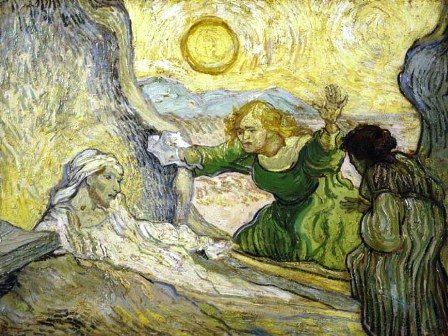
Van Gogh’s extraordinary painting of the resurrection of Lazarus
Distraught, Martha reproached Jesus for being absent when he was needed. Modern interpretations of the New Testament assume that women at that time were down-trodden and docile, but there is no sign of it in this story.
But then as Martha continued talking, she named Jesus as the Messiah and Son of God. This is the central moment of the story.
Martha said the same words that the apostle Peter said in Mark 8:29. On the strength of these words, Peter went on to become the first leader of the Christian community.
The writer of John’s gospel suggests that Martha had an equal right to authority, because she had an equal understanding of who Jesus was.
Why is this story so important?
John inserted the story into his gospel to stifle the argument that was raging in the Christian community. Since the day of Pentecost, when the Christian church began, women had been acting as deacons, preaching about Jesus and presiding over eucharistic meals .
But opposition had arisen because this did not mirror the position that women held in society at the time. By telling the stories about Martha and Mary, John showed that Jesus treated women as the equal of men, and implied that Christian practice should do the same .
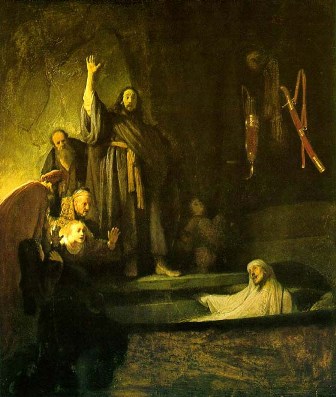
Rembrandt’s ‘The Raising of Lazarus’
After speaking with Jesus, Martha called Mary. Mary ran to Jesus, weeping with terrible grief, and Jesus was deeply upset by the sight of her pain.
Jesus went to the tomb, had the stone taken away from its entrance, prayed, and then called loudly to Lazarus. Lazarus appeared, alive, still wrapped in the linen strips of cloth used to cover his corpse.
Many Jews believed in Jesus after witnessing this event.
Note: The term ‘the Jews’ is used in several ways in the gospels.
- In the story you have just read, John meant ‘the Jewish friends and relatives of the family’ . Remember that Jesus and the people he knew were Jewish.
- At other times, when John spoke of ‘the Jews’, he meant any people with closed minds . People like this can be found anywhere.
- John was writing for a community of Jews who had moved away from traditional Judaism, so his portrayal of traditional Jews often reflected the dislike this breakaway community felt for those who did not share their faith in Jesus.
Mary of Bethany anoints Jesus
John 12:1-8 In the last year of his ministry, Jesus again visited his friends at Bethany, just prior to going into Jerusalem for the feast of the Passover.
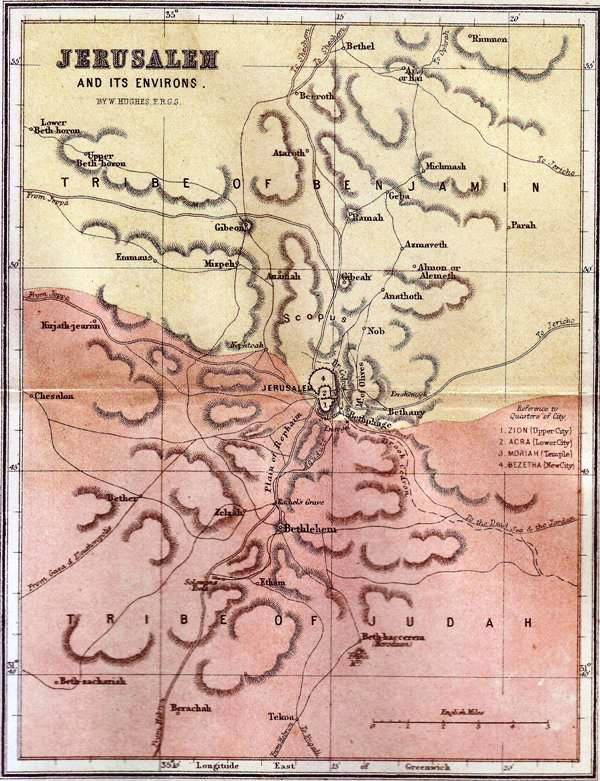
A topographic map of Jerusalem and the surrounding countryside, showing the route Jesus would have taken on his way south-eastwards from Jerusalem to Bethany. Go to MAPS to see Jerusalem and Judea at the time of Jesus.
This was the week before his death. All his friends knew that Jesus was in grave danger. They did not want him to go anywhere near Jerusalem (see John 11:8 and 11:16). The house at Bethany was a safe place, a refuge.
Martha, Mary and Lazarus gave a dinner for Jesus and the people with him.
In was the custom when guests arrived for dinner to give them a refreshing foot bath. Then they either sat at a table, or lay propped up on couches surrounding a central food table.
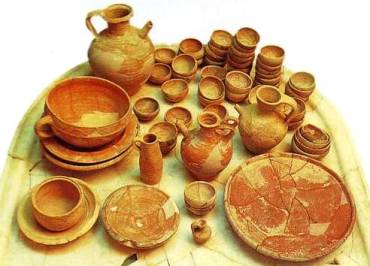
1st century table pots and plates, excavated in Israel
People always ate from a communal platter, which contained the main dish. There might be small side dishes. It was essential to wash themselves before eating, because they ate with their fingers from the one plate – knives and forks were not used, and food was scooped up with a piece of bread ( see John 13:26 ).
Depending on the circumstances, women and men might share a meal, sitting together. Because they prepared the food, women also brought the food to the table, as Martha did in this story. Martha served at the meal.
‘Six days before the Passover Jesus came to Bethany, the home of Lazarus, whom he had raised from the dead. There they gave a dinner for him. Martha served, and Lazarus was one of those at the table with him.
Mary took a pound of costly perfume made of pure nard, anointed Jesus’ feet, and wiped them with her hair. The house was filled with the fragrance of the perfume.’ Read John 11:1-4
Why is the anointing with oil so important?
The story of the dinner, as told by John, is set on a Sunday evening, when members of the early Christian communities met to share a eucharistic celebration.
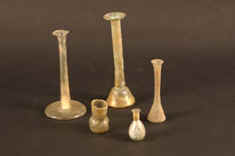
Roman perfume bottles
This was no accident. John, writing circa 100AD, used several levels of meaning in the story.
- At the first level, Martha ‘served’ at the meal .
- But on a second level of meaning Martha was acting as a deacon at a eucharistic celebration . The word ‘served’ in Greek was diakonein ; it was the term used for deacons in the early Christian church. This word was used in both stories about Martha and Mary, in Luke’s and John’s gospels.
During the meal, Mary took a container of oil of nard (oil extracted from a balsam tree), broke it, and anointed Jesus’ feet with the expensive perfume. Then she wiped his feet with her hair .
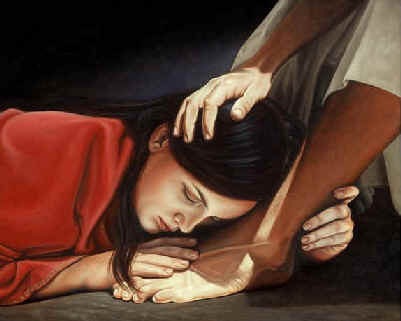
Mary of Bethany anoints Jesus’ feet with nard, an expensive perfume
Anointing with oil has always had deep religious significance.
- Even today it is performed at the coronation of a monarch .
- In the Jewish world, it was a symbolic action which announced that the person anointed was especially favored by God .
- In the Old Testament, prophets anointed future kings , for example, Samuel anointed the future King David.
When Mary anointed Jesus, she may have been anointing him as a king, the Messiah – Mark’s gospel hinted at this when it said that what she had done would always be remembered (Mark 14:3-0).
Judas objects
The apostle Judas, a close friend of Jesus , objected to the waste of money. He reasoned that the money should be given to people in need – and of course he had a point.
Judas was particularly aware of the value of money because he was the organizer of the group who traveled with Jesus, in charge of the money that they carried with them . He paid for food and lodging from the contributions that wealthy supporters gave Jesus.
In a bitter aside written long after Jesus’ death, the writer of John’s gospel suggests that Judas was not honest in this task .
How did Jesus respond to Mary’s action?
But Jesus defended Mary’s apparent extravagance. He knew he was in great danger , and that the path he meant to take might end in a terrible death.
Being fully human he could not see into the future – this is one of the great mysteries of Christian faith about which theologians ponder. He was both fully human like us and so could not know the future, but he was also God and thus all-knowing .
In any event, Jesus knew the probable consequences of the actions he planned . He had many enemies who would bring him down if they could.
Mary also knew the danger that Jesus was in, and that he faced an ominous future.
She offered her gift as a comfort and a reassurance to him, and perhaps as something more. She believed he was the Messiah, and the nard was her anointing oil.
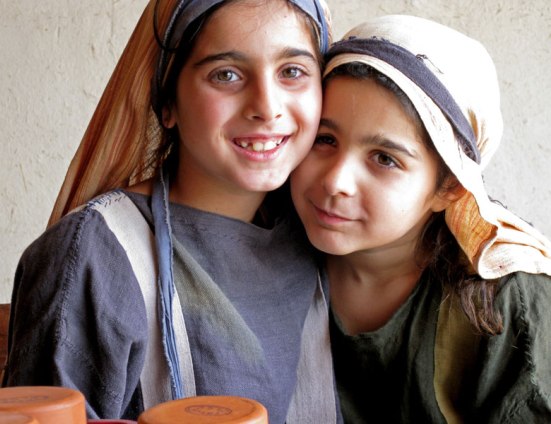
Main ideas in Martha’s & Mary’s story
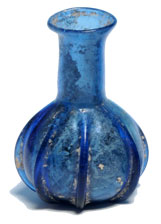
Ancient perfume bottle which may once have held nard
- The truth of the Resurrection. Stories about Martha, Mary and Lazarus suggest that women’s testimony should be given equal weight with men’s . This was vitally important in the Christian story, since the first witnesses to the Resurrection had been women. Could they be trusted?
Names in this story
Martha means ‘lady of the house’. Mary means ‘wise woman’ or ‘lady’; it is a Greek form of the Hebrew Miriam or Mariam. It was a popular name at the time of Jesus, perhaps because of the beautiful young Jewish princess Mariamme, married to King Herod the Great and murdered by him on a false charge of infidelity. Naming your child Mary or Miriam was a not-too-subtle protest against King Herod and what he had done. Lazarus means ‘God has given help’
The story in brief
1 Jesus visits Martha and Mary Martha and Mary offer hospitality to their friend Jesus of Nazareth, a controversial rabbi from Galilee. Mary sits and listens to him as he talks, but Martha objects to the fact that she is left with all the work. Jesus tells Martha to decide what is really important. See Luke 10:38-42
2 Their brother Lazarus is terribly ill, dying. In desperation Martha and Mary send for Jesus. He delays coming, and Lazarus dies. When Jesus arrives, both sisters reproach him for not coming sooner. But Martha also makes an extraordinary statement of faith in Jesus. In response, Jesus goes to the tomb, prays, and calls to Lazarus. Lazarus comes out, alive, from the tomb.
See John 11:1-44
3 Mary of Bethany anoints Jesus Martha, Mary and Lazarus give a dinner for Jesus. During the dinner, Mary anoints Jesus with expensive nard perfume . Judas objects to her extravagance, but Jesus defends her. The crucifixion happens just a few days later. See John 12:1-8
Bible Study Resource, Martha and Mary, New Testament Women: Two Sisters, friends and disciples of Jesus
Martha & Mary links

Martha & Mary – the gospel text
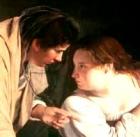
Martha & Mary – their world

Bible study ideas
- Should women work or stay at home?
- A letter from the past
- Tracing the last steps of Jesus
- The dinner at Bethany
- Famous quotations
- Focus questions for gospel study
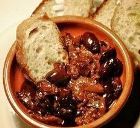
Food in the Bible
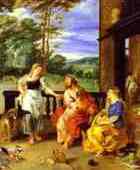
Dramatic paintings of Mary & Martha

Families in ancient Israel
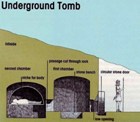
Major Events Laying out the dead, burying a family member
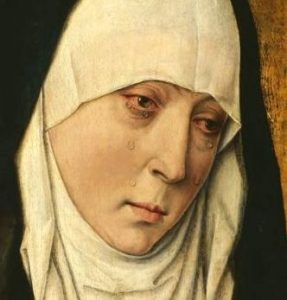
As far as the Jerusalemites were concerned, Jesus and his friends were a group of provincial dissidents from Galilee. Judas, on the other hand, was from Jerusalem. So what was he doing with Jesus? And why did he object to Mary anointing the feet of Jesus?
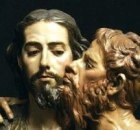
Who was Judas?

Life of Jesus Christ
- How to use this site
- ‘Bible Women’ author
- 5 Essential Elements of a Contract: Understanding Key Legal Terms
- Understanding the 2014 Backup Camera Requirement in Legal Context
How Jesus defends Mary and converts Martha
A Reflection for Friday of the Seventeenth Week in Ordinary Time
“Lord, do you not care that my sister has left me by myself to do the serving? Tell her to help me.” The Lord said to her in reply, “ Martha, Martha, you are anxious and worried about many things. There is need of only one thing. Mary has chosen the better part and it will not be taken from her. (Lk 10: 41-42)
Christ’s response to Martha lays out a nearly perfect three-sentence drama: There is a problem / There is a solution / Behold the hero who discovers the solution . In looking at this exchange, it is worth examining what Jesus does not say. He does not tell Martha, who is burdened with much serving, to stop working. He does not command her to stop being anxious. Jesus does not insist to Martha, when she (indirectly) attacks her sister, that she leave Mary alone.
Martha’s work is coming from anxiety and worry. She is burdened. And it is no good, being this kind of burdened. It is a spirit killer.
Christ instead shows Martha where her work is coming from. Martha’s work is coming from anxiety and worry. She is burdened. And it is no good, being this kind of burdened. It is a spirit killer.
Christ then goes on to another laying out of things, another descriptor: There is a good thing, he says to Martha. Your sister is choosing the good thing. Nothing will stop her.
In this way, describing and not prescribing, laying out the truth rather than commanding an action, Jesus defends Mary from Martha’s passive-aggressive attack. He shuts Martha down, by showing (not telling) her that she deserves to be shut down. Jesus tells the truth about what is going on—Mary has put her life in my hands, and she need do nothing more. In doing so, he defends Mary and converts Martha.
Christ does not need to hector, command, reform; he just needs to state what is. The truth sells itself.

Brother Joe Hoover, S.J., is America’s poetry editor and the author of O Death, Where is Thy Sting: A Meditation on Suffering.
Most popular

Your source for jobs, books, retreats, and much more.
The latest from america
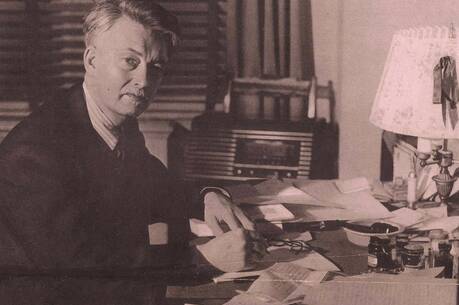
- Church Calendar
- Weekly Prayers & Readings
- Music Playlists
- Christmas Communion Liturgy
- Lent & Holy Week
- Easter & Ascension
- Pentecost & Ordinary Time

Martha and Mary: When Faith Feels Hopeless (John 11:1-44)

Jesus’ teaching had so angered the Jews in Judea that they had tried to stone Him on more than one occasion, and the synagogue leaders there were trying to have Him arrested and executed. So Jesus left Judea and was preaching on the other side of the Jordan River, where many people were coming to Him and accepting His teaching.
A Delayed Response
John 11:1-8, 14-16:
1 Now a certain man was ill, Lazarus of Bethany, the village of Mary and her sister Martha. 2 It was Mary who anointed the Lord with ointment and wiped his feet with her hair, whose brother Lazarus was ill. 3 The sisters sent to him, saying, “Lord, he whom you love is ill.” 4 But when Jesus heard it he said, “This illness does not lead to death. It is for the glory of God, so that the Son of God may be glorified through it.” 5 Now Jesus loved Martha and her sister and Lazarus. 6 So, when he heard that Lazarus was ill, he stayed two days longer in the place where he was. 7 Then after this he said to the disciples, “Let us go to Judea again.” 8 The disciples said to him, “Rabbi, the Jews were just now seeking to stone you, and are you going there again?”
14 Then Jesus told them plainly, “Lazarus has died, 15 and for your sake I am glad that I was not there, so that you may believe. But let us go to him.” 16 So Thomas, called the Twin, said to his fellow disciples, “Let us also go, that we may die with him.”
When He had been in Judea, Jesus often stayed with Lazarus and his two sisters, Martha and Mary. Practical, hands-on, and direct, Martha was the older of the two. Mary was quieter and more sensitive, given to impulsive acts of devotion. So when Lazarus became gravely ill, his two sisters sent a messenger to Jesus, with instructions to simply inform Him that Lazarus was ill. They were confident that this simple message would be enough to move Him to take care of the situation. But instead of either rebuking the illness or coming with the messenger to heal Lazarus, Jesus simply informed the messenger that the end of the illness would not be death, but, rather, God’s glory.
Read verses 5 and 6 carefully. Notice that it says that Jesus stayed where He was because He loved Mary, Martha, and Lazarus. He cared deeply enough that He did not immediately rush to their aid! He knew that what was about to happen would hurt; it would shake them to their core; it would test their faith in ways they could not understand; but it would be best for them. He was willing to put them through the pain and anguish for their own good!
Think about it : How often have you prayed, and it seems like He does not answer? He has something greater in mind than you do. He’s willing to remain silent and aloof for a time in order to bring you a greater victory later.
When you pray and God does not seem to answer, He has something greater in mind than you do.
After two more days, Jesus declares His intention to return to Judea. His disciples protest, pointing out that the Jews had tried to stone Him the last time He was there. Jesus’ response can be summed up as “Trust Me—I know what I’m doing.” Once His disciples realize they can’t dissuade Him from His purpose, Thomas responds with remarkably pessimistic courage: “OK, let’s go and die with Him.”
Although he didn’t sound very happy about it, Thomas and the other disciples trusted Jesus enough to follow Him. Greater faith would have brought them greater comfort, but the important point is that they had obedient faith.
Focus on the text : If you note the time carefully, you will find that after receiving the message, Jesus remained where He was for two days and then traveled to Bethany. When He arrived, Lazarus had been dead four days. This means the messenger must have taken a day to travel to Jesus, Jesus took a day to travel back to Bethany, and Lazarus must have died soon after the messenger left. So when Jesus said, “This sickness is not unto death,” Lazarus was already dead! Although on the surface it looked like He was either mistaken or lying, the reality is that He had a different perspective. His statement reflected the big picture.
The Sisters
John 11:20-27, 32-37:
20 So when Martha heard that Jesus was coming, she went and met him, but Mary remained seated in the house. 21 Martha said to Jesus, “Lord, if you had been here, my brother would not have died. 22 But even now I know that whatever you ask from God, God will give you.” 23 Jesus said to her, “Your brother will rise again.” 24 Martha said to him, “I know that he will rise again in the resurrection on the last day.” 25 Jesus said to her, “I am the resurrection and the life. Whoever believes in me, though he die, yet shall he live, 26 and everyone who lives and believes in me shall never die. Do you believe this?” 27 She said to him, “Yes, Lord; I believe that you are the Christ, the Son of God, who is coming into the world.” 28 And when she had said this, she went away, and called Mary her sister, saying secretly, “The Teacher is here, and is calling for you.”
32 Now when Mary came to where Jesus was and saw him, she fell at his feet, saying to him, “Lord, if you had been here, my brother would not have died.” 33 When Jesus saw her weeping, and the Jews who had come with her also weeping, he was deeply moved in his spirit and greatly troubled. 34 And he said, “Where have you laid him?” They said to him, “Lord, come and see.” 35 Jesus wept. 36 So the Jews said, “See how he loved him!” 37 But some of them said, “Could not he who opened the eyes of the blind man also have kept this man from dying?”
Going deeper : We first meet Mary and Martha in Luke 10. Martha is busy and stressed by serving an elaborate meal, while Mary is sitting and listening to Jesus. Martha comes to Jesus and tells Him to make Mary help her. Based on this interchange and Jesus’ rebuke, we often picture Martha as harsh, impatient and domineering, while Mary is the spiritual one who understands what is truly important. But this oversimplifies the sisters.
Martha is the action-oriented one. Even after Lazarus’ resurrection, we find Martha serving dinner again. She shows her love for Jesus by doing—but her love is no less real and deep for that. In fact, her over-doing dinner in Luke 10 is probably itself an expression of her love for Jesus.
Mary is the sensitive one. She shows her love for Jesus by just being with Him, listening to Him. At the dinner after Lazarus was raised, her instinctive love overflowed as she anointed Jesus’ feet with extremely expensive perfume and dried them with her hair (Luk 12:2-3). Though impulsive and maybe even a bit inappropriate, it was a deeply meaningful expression of love and gratitude.
In John 11, Jesus’ interaction with these two sisters is as different as the sisters themselves. And that’s the point: they both loved and trusted Jesus but expressed it in very different, though not always equally good, ways. While they both needed Jesus, what they needed from Him was very different, and He met both with exactly what they needed.
Someone told Martha that Jesus was coming, so true to her take-charge, hands-on nature, Martha heads out to meet Jesus and talk with Him. It’s probably significant that the visiting friends and family did not follow Martha: they see her as the strong one who can handle herself. And so Martha receives what she needs in that moment—the opportunity to privately interact with Jesus, to pour out her hurt, and also reaffirm her love and faith in Him. There’s more to their conversation than might be obvious on the surface. Let’s look more closely at these verses.
Verse 21: “Martha said to Jesus, ‘Lord, if you had been here, my brother would not have died.’” There’s a lot of hurt in this exclamation, and probably a bit of accusation as well. But there’s also faith: “I still believe in Your power to heal, even though You didn’t.”
Verse 22: “But even now I know that whatever you ask from God, God will give you.” She’s not expecting Jesus to raise Lazarus, but she is expressing faith in Him. “Even though You disappointed and hurt me, I still trust You.”
Verse 23: “ Jesus said to her, ‘Your brother will rise again.’” Jesus knows what He is about to do, even if Martha has no idea.
Verse 24: “Martha said to him, ‘I know that he will rise again in the resurrection on the last day.’” Martha takes Jesus’ words as simple comfort, a reminder of the eternal life of the righteous. It’s the sort of comfort and response that you may hear at any Christian funeral.
Verses 25-26: “Jesus said to her, ‘I am the resurrection and the life. Whoever believes in me, though he die, yet shall he live, and everyone who lives and believes in me shall never die. Do you believe this?’” Jesus is testing her faith. She claimed to still trust Him as the Son of God. Now He is challenging her to trust Him as the Lord of Life, even in the face of the death of her beloved brother.
Verse 27: “ She said to him, ‘Yes, Lord; I believe that you are the Christ, the Son of God, who is coming into the world.’” Notice that she does not say “Yes, I believe that You are the Resurrection,” or “I believe that You are the Lord of Life.” She does not really understand what He is saying––but the vital point is that she believes in Him. And it’s enough. For Martha, like for us, believing in Jesus is always enough.
During this conversation, Mary has remained behind in the house. Martha goes and gets Mary quietly, to allow her some private time with Jesus as well. But as Mary quickly leaves the house, the crowd of people follow her, reasoning that she is going to the tomb and will need support there. Unfortunately, this means that Mary gets no chance to have a private conversation with Jesus. She greets Jesus with exactly the same words as Martha did: “Lord, if you had been here, my brother would not have died.” Then, overcome with grief, she dissolves into tears.
Jesus, seeing her and all those who came with her weeping, is Himself moved to tears. In light of Jesus’ obvious grief, His failure to heal Lazarus is inexplicable to those around, and they wonder aloud why He did nothing.
It’s OK to grieve, to struggle, to feel loss. Jesus joins in your grief, even at your darkest time.
Think about it: There is incredible empathy reflected in that simple phrase in verse 35: “Jesus wept.” He knew that He could have healed Lazarus, and the grief and pain would have been avoided. Yet He did not try to shoulder the blame for Lazarus’ death. He knew that He was about to “fix it,” that Lazarus would soon rise, and that their grief would turn to incredible joy. Yet He did not try to gloss over the grief, to rush through it as though it did not matter. He understood grief, and that grief is real and powerful. So He simply wept with His friends—He entered into their grief. And in so doing He affirmed that, even given the reality of resurrection, grief is an appropriate response to loss. It’s OK to grieve, to struggle, to feel loss. Jesus joins in your grief, even at your darkest time.
An Impossible Resurrection
John 11:38-44:
38 Then Jesus, deeply moved again, came to the tomb. It was a cave, and a stone lay against it. 39 Jesus said, “Take away the stone.” Martha, the sister of the dead man, said to him, “Lord, by this time there will be an odor, for he has been dead four days.” 40 Jesus said to her, “Did I not tell you that if you believed you would see the glory of God?” 41 So they took away the stone. And Jesus lifted up his eyes and said, “Father, I thank you that you have heard me. 42 I knew that you always hear me, but I said this on account of the people standing around, that they may believe that you sent me.” 43 When he had said these things, he cried out with a loud voice, “Lazarus, come out.” 44 The man who had died came out, his hands and feet bound with linen strips, and his face wrapped with a cloth. Jesus said to them, “Unbind him, and let him go.”
So Jesus, accompanied by the whole group, comes to the tomb. As was customary in that day, Lazarus had been laid to rest in a cave, with a stone sealing the opening. Jesus orders that the stone be removed, whereupon Martha protests. After four days, decomposition would have set in, and opening the tomb would merely release the stench of death. Surely they didn’t need another horrific reminder that Lazarus was dead.
Focus on the text: The Jews believed that when a person died, the person’s spirit stayed around the body for three days, then departed. Perhaps this is why Jesus waited till Lazarus had been dead four days—to emphasize His absolute control over life and death.
Again, Jesus’ response was essentially, “Trust Me.” It was up to Martha: they would not open the tomb without her consent. She had claimed to still believe in Jesus, and now she must decide whether or not to act on that faith. Even now, Martha’s faith was strong, and she agreed.
So they opened the tomb.
And Jesus prayed.
It’s not the sort of prayer that we would expect, perhaps most of all because of what He does not say. He does not ask for the ability to raise Lazarus, nor ask the Father to raise him. He has known all along what the Father planned, even claiming four days before that the final outcome of Lazarus’ sickness would be to glorify God. So He approaches the tomb in complete confidence, knowing what He was about to do, knowing that it was the Father’s will, and, therefore, knowing that the Father would provide the ability. He simply thanks Him for hearing Him, then explains that His prayer is for the sake of those listening. And again we see the emphasis on faith—the purpose of Jesus’ prayer was that those listening would believe that the Father had sent Jesus.
Think about it: How often do we pray for the ability to do what we know we should, as if we must beg God for the strength that He has already promised? If we have clear direction from His Word or have already prayed and know what God would have us do, we can move forward confidently, knowing that He will also enable us to obey.
And Jesus calls to Lazarus, and Lazarus emerges from the tomb. He is bound hand and foot by graveclothes, yet he manages to struggle his way to the mouth of the cave. The onlookers are apparently so awestruck that Jesus has to prompt them to release Lazarus from his bonds.
Focus on the text: A number of older commentators feel that, in addition to bringing him back to life, Jesus’ command to “come forth” actually brought Lazarus to the mouth of the cave without his having to struggle there hampered by the restrictive graveclothes. While this is possible, there is nothing in the text that indicates this, and the most natural understanding is that Lazarus came back to life, arose, and walked as best he could to the opening of the tomb.
And so Martha’s faith is vindicated. As is Mary’s faith. And, for that matter, the disciples’ faith. None of them knew what would happen—they just trusted Jesus even when all seemed lost.
Irrational Opposition
John 11:45-53:
45 Many of the Jews therefore, who had come with Mary and had seen what he did, believed in him, 46 but some of them went to the Pharisees and told them what Jesus had done. 47 So the chief priests and the Pharisees gathered the council and said, “What are we to do? For this man performs many signs. 48 If we let him go on like this, everyone will believe in him, and the Romans will come and take away both our place and our nation.” 49 But one of them, Caiaphas, who was high priest that year, said to them, “You know nothing at all. 50 Nor do you understand that it is better for you that one man should die for the people, not that the whole nation should perish.” 51 He did not say this of his own accord, but being high priest that year he prophesied that Jesus would die for the nation, 52 and not for the nation only, but also to gather into one the children of God who are scattered abroad. 53 So from that day on they made plans to put him to death.
Some of the witnesses reported what had happened to the Jewish leaders. And even when faced with absolute proof of Jesus’ power, all they could think about was themselves and their positions. While they claimed to be concerned for the welfare of the people—“not that the whole nation should perish” (v. 50)—their real concern is reflected in verse 48: “If we let him go on like this, everyone will believe in him, and the Romans will come and take away both our place and our nation.”
Going deeper: If this story was just about Lazarus’ resurrection, it would have ended at verse 44. But the story is not just a tale of resurrection—it’s a contrast between faith in Jesus and opposition to Jesus. Back in the first chapter of his Gospel, John made the point that everyone either believes in Jesus or opposes Him. There is no middle ground. And the story of Lazarus serves as a practical example of this truth. The stark contrast between those who believe and those who do not is presented in John 1, and here we see an extreme illustration of this truth. The raising of Lazarus engendered faith in some and solidified opposition in others.
Everyone either believes in Jesus or opposes Him. There is no middle ground.
Mary, Martha, and the disciples are examples of people who believe Jesus in spite of all apparent evidence to the contrary, and because of that faith, they are willing to go to extreme lengths to obey Him. But the narrative continues, and we see the other side of the contrast: those who oppose Him are willing to go to equally extreme lengths in their fight against Him.
So on the advice of Caiaphas, the High Priest at the time, and under the guise of “protecting the nation,” the Jewish leaders begin laying specific plans for Jesus’ death. There is great irony in this passage, as the leaders decide to kill the one Man who has demonstrated power over death. This scene shows the culmination of the opposition to Jesus that had been growing throughout His ministry. It began as a grassroots movement among the synagogues, with the threat of excommunication for any who dared to follow Jesus. It was also seen in various impulsive attempts to stone Jesus and in the Jewish leaders’ attempt to arrest Jesus for questioning. But only now does the opposition become a formal plan among the Jewish leaders.
While God primarily works through the willing obedience of His children, He can and does use even those who oppose Him. Here, Caiaphas made a selfish recommendation, that it would be better to kill an innocent man than to risk the wrath of the Romans. But in God’s providence and in spite of himself, Caiaphas phrased his statement in a way that was actually a prophecy about the salvation that Jesus’ death would bring, just as his actions would bring about that death and salvation.
This story contains two examples of God using negative events for good. Lazarus’ sickness and death turned into a stellar example of Jesus’ power over death, and Caiaphas’ rejection of Jesus became a beautiful prophecy of salvation. God will use every circumstance for His glory, and to accomplish His purposes. It’s up to us whether we freely submit to Him as joyful servants of God, or whether we submit only unwillingly, in spite of all that we can do to resist Him.

KEEP READING
Heaven & hell, part 2: the inspiration of heaven (1 peter 2:11), baptism now saves you through the resurrection of christ: an easter sermon (1 peter 3:18–22), smyrna: the poor but rich church (revelation 2:8–11).

- Parenting Insights
- Personal Growth and Development
- Relationship Growth
- Spiritual Growth
The Story of Mary and Martha: 6 Inspiring Lessons We Learn
The story of Mary and Martha in the Bible is a true tale of two sisters who passionately loved Jesus.
I have frequently studied both of these women throughout the past few years and each time I study the story of Mary and Martha I learn something new!
At the time of this writing about the story of Mary and Martha, I am also teaching Bible lessons about Mary of Bethany to 12-year-olds in our local school.
Oh my goodness I have some scripture treasure to share with you about the time when Mary was sitting at the feet of Jesus and she poured very expensive perfume all over His feet!
But I am getting ahead of our life-transforming story of Mary and Martha. Keep reading to discover the lessons we learn from Mary and Martha in the Bible.
The Story of Mary and Martha in the Bible
How did Jesus know Mary and Martha?
Mary, Martha, and their brother, Lazarus lived together in Bethany, which is a small town in Judea just two miles from Jerusalem, on the eastern slopes of the Mount of Olives.
It is thought that they may have been wealthy and lived in a large home – big enough to accommodate Jesus and His disciples.
There is no mention of husbands or parents, so it is assumed that they were living independently and that Martha was probably the older sibling left in charge of running the household.
We read the story of Mary and Martha multiple times in the Gospels and we will take a more detailed look at these scriptures below.
The story of Mary and Martha reveals such a beautiful picture of what it would have looked like to be a passionate follower of Jesus back in Biblical times.
The Gospel of John reveals how close a friendship Jesus had with Mary, Martha, and their brother Lazarus.
“Now Jesus loved Martha and her sister and Lazarus.” John 11:5 ESV.
Jesus did not favor man over woman or woman over a man. The culture at this time was for the women to serve at home and the men were the ones that were expected to learn from the Rabbi.
We will be discussing the familiar dialogue that Martha had with Jesus when she asked Jesus to tell Mary to get up and help her serve instead of sitting at Jesus’ feet hanging on to every single word that He spoke.
We will also be studying the story of Mary and Martha where Mary poured very expensive perfume over the feet of Jesus.
Can you imagine being in the presence of Jesus and being so comfortable with Him that you can tell Jesus to reprimand a sister or to be at ease to sit at the feet of Jesus and not just pour perfume over His feet but to dry them with your hair?
The story of Mary and Martha, and Lazarus does indeed show us that they had a glorious friendship with Jesus!

Lessons from the Story of Mary and Martha
In the story of Mary and Martha, we learn that Mary was sitting at Jesus’ feet.
“ Now as they went on their way, Jesus entered a village. And a woman named Martha welcomed him into her house. And she had a sister called Mary, who sat at the Lord’s feet and listened to his teaching.
But Martha was distracted with much serving. And she went up to him and said, “Lord, do you not care that my sister has left me to serve alone? Tell her then to help me.”
But the Lord answered her, “Martha, Martha, you are anxious and troubled about many things, but one thing is necessary. Mary has chosen the good portion, which will not be taken away from her.”
Luke 10:38-42 .
What stood out to you when you first read this scripture about the story of Mary and Martha?
I get giddy every time I read these Bible verses!
Can you imagine speaking to Jesus like that about your sister?
Take note that scripture states that Mary was sitting at Jesus’ feet. This is the posture usually taken by men who wish to learn from the Rabbi.
It was the culture at this time for the men to sit at the feet of the Rabbi to learn and it was unusual for a woman to be invited to do that too.
Lessons from Martha in The Bible
What can we learn from Martha in the Bible?
So we have Martha rushing about preparing a meal for her guests (which takes a lot of effort and time) and where was her sister Mary?
Mary was eagerly sitting at the feet of Jesus listening and learning all that He was teaching.
Well, poor Martha just got very frustrated. Maybe she was feeling a little overwhelmed by the work that needed to be done to take care of her guests or maybe she was frustrated at not being able to take the time to sit and listen to the words of Jesus.
I know that I would want to be preparing a fantastic meal for Jesus but I would also want to be sitting at His feet gleaning all that He had to teach me.
In another portion of scripture further down in this post, we will find out how Martha’s faith grew great and expectant in Jesus when He comes to her home after Lazarus dies.

4 Lessons We Learn from Martha
In the story of Mary and Martha, here are four lessons we learn from Martha.
1. Go straight to Jesus with your problem.
When Martha demanded that Jesus tell her sister to come and help her, He said,
“Martha, Martha, you are worried and upset about many things, but only one thing is needed. Mary has chosen what is better, and it will not be taken from her.”
I wonder if Martha was embarrassed by what Jesus said to her. Did she realize that she was missing out by being too busy serving instead of using that time to sit and listen to Jesus?
I wonder if you and I sometimes get our priorities wrong and get too busy serving when we need to sit still in God’s presence and be instructed by Him?
2. Come boldly and confidently in the Lord’s presence.
Did you notice that Martha was very comfortable confronting Jesus with her problem?
Martha is so comfortable and confident in Jesus’ presence that she can say to Him exactly how she feels and doesn’t have to hide her frustration.
We need to learn from Martha. We can cultivate a relationship with Jesus that is so solid and intimate that we can boldly come into the throne of grace of God’s presence anytime and all the time without fear and wanting to hide from Him.
“Let us then with confidence draw near to the throne of grace, that we may receive mercy and find grace to help in time of need.” Hebrews 4:16 ESV.
3. Seek God’s peace.
Martha learns that very important ‘one thing’ that Jesus wants for all of us. Jesus teaches Martha that the most important thing in life is to seek His presence.
We need to have a close and intimate relationship with Him.
When we get that ‘one thing’ right then everything else will fall into place .
When we seek God first we gain God’s grace and wisdom for the task before us. And most importantly we will have God’s peace in the middle of whatever busy season that we are in.
“And God is able to make all grace abound to you so that having all sufficiency in all things at all times, you may abound in every good work”. 2 Corinthians 9:8.

4. Activate your faith muscle just like Martha
In another portion of scripture, after Lazarus dies, we see Martha express an extraordinary amount of faith in Jesus as the Son of God.
In Luke chapter 11 we read about Mary and Martha sending urgent word to Jesus that Lazarus was very sick. Jesus delayed coming to see them and Lazarus died.
“Then Jesus told them plainly, “Lazarus has died, and for your sake, I am glad that I was not there, so that you may believe. But let us go to him.” John 11:14-15.
Jesus had a plan – a good plan. It was an unexpected plan that caused much delight and much controversy all at the same time!
The religious leaders were not happy that Jesus was gaining so much attention and they did not recognize Him as the Son of God.
Let’s read how the drama unfolds:
“Now when Jesus came, he found that Lazarus had already been in the tomb for four days. Bethany was near Jerusalem, about two miles off, and many of the Jews had come to Martha and Mary to console them concerning their brother.
So when Martha heard that Jesus was coming, she went and met him, but Mary remained seated in the house.
Martha said to Jesus, “Lord if you had been here, my brother would not have died. But even now I know that whatever you ask from God, God will give you.” Jesus said to her, “Your brother will rise again.” Martha said to him, “I know that he will rise again in the resurrection on the last day.”
Jesus said to her, “I am the resurrection and the life. Whoever believes in me, though he dies, yet shall he live, and everyone who lives and believes in me shall never die.
Do you believe this?” She said to him, “Yes, Lord; I believe that you are the Christ, the Son of God, who is coming into the world.”
John 11:17-27.
Wow! What a statement of faith from Martha!
We see Martha running to meet Jesus as soon as she hears that He is near.
Maybe she was complaining a little bit that Jesus had not come straight away (verse 21) but look at what she said in verse 22, “But even now I know that whatever you ask from God, God will give you.”
Martha’s faith is shining for all of us to see.
Do you know how the story of Lazarus ends?
“Then Jesus deeply moved again, came to the tomb. It was a cave, and a stone lay against it. Jesus said, “Take away the stone.”
Martha, the sister of the dead man, said to him, “Lord, by this time there will be an odor, for he has been dead four days.” Jesus said to her, “Did I not tell you that if you believed you would see the glory of God?”
So they took away the stone. And Jesus lifted up his eyes and said, “Father, I thank you that you have heard me. I knew that you always hear me, but I said this on account of the people standing around, that they may believe that you sent me.”
When he had said these things, he cried out with a loud voice, “Lazarus, come out.” The man who had died came out, his hands and feet bound with linen strips, and his face wrapped with a cloth. Jesus said to them, “Unbind him, and let him go.”
John 11:38-44.
It seems that Martha’s faith may have wavered for a moment in verse 39 but Jesus reassures her and her brother is brought back to life!
Did you notice the transformation in Martha?
When we first met Martha she was busy preparing her home and food for her guests. This was a noble thing to do but for that exact time in her life, it was more important to be sitting at the feet of Jesus and to be refreshed in His presence.
Martha did the right thing in coming straight to Jesus to present all her problems to Him and to look to Him to give the perfect answer to her problem. But the answer that she received was not the one she was expecting.
Jesus told Martha ‘the one thing’ that was most important was to sit in His presence.
We now catch up with Martha when Jesus comes to resurrect Lazarus and we see the transformation in Martha. She is full of expectant faith.
Are you full of expectant faith, that God will work His miracles in your life?
Martha wasn’t perfect but she obviously worked hard in pursuing the presence of Jesus and now we see how her faith muscle grew!
We don’t have to be perfect either . We just need to cultivate a heart that desires to beat louder and stronger for Jesus. We need to seek His presence above everything else and enjoy His sweet fellowship.
Then you and I will be ready and refreshed to do the work that God has called and created us to do.
Lessons from Mary in the Bible
What can we learn from Mary in the Bible?
We have already discussed how Martha was very good at taking care of her household and guests. Martha did what was expected of her culture at that time. It was Mary who stepped outside of the cultural expectations.
Mary was not supposed to be sitting at the feet of Jesus with the men. She would have been expected to be helping Martha with the preparation of food in the kitchen.
Women of that time were kept very busy. They would have been busy grinding grain for bread, then mixing, kneading, and baking it. Then they would also be responsible for drawing water for all the day’s requirements.
They would also be busy mending and washing clothes and all the other daily chores that contribute to a thriving family.
I am so thankful for all the modern-day conveniences that we have!
The point is that women were extremely busy and the tasks could easily become overwhelming.
Where do we find Mary when her household is very busy with very important guests?
Mary is sitting at the feet of Jesus, listening very carefully to everything that He teaches.
Please take note that Jesus does respect the work that needs to be done in the household and He does encourage us to serve others.
But the most important thing to do is the ‘ one thing ‘ that Mary did and that is to seek the presence of Jesus.
2 Lessons We Learn from Mary
In the story of Mary and Martha here are two lessons we learn from Mary.
1. Seek God’s presence first.
The first important lesson to learn from the story of Mary and Marta is to seek God’s presence and to listen well as He speaks to us.
Mary wasn’t concerned that she was breaking the cultural rules of her time. She was bold in making sure that she had a place to sit and listen to Jesus, just like the men were doing.
The fact that Mary dared to break this cultural role in society shows that she was very hungry to hear all that Jesus was teaching. Also, take heed of the fact that Jesus defended Mary when Martha complained that she was not helping her.
Jesus actually said that Mary had chosen the right thing. Jesus longs for you and me to take time throughout our busy daily lives to sit at His feet and soak in His presence .
So join me in being hungry for the Lord’s presence and seeking Him first.
2. Be totally devoted to Jesus and listen for Him to speak to you.
When Mary sat at Jesus’ feet she obviously was devoted to Him and listened to His words carefully.
How do I know this to be true?
We read in John 12:1-8,
“Six days before the Passover, Jesus, therefore, came to Bethany, where Lazarus was, whom Jesus had raised from the dead. So they gave a dinner for him there. Martha served, and Lazarus was one of those reclining with him at the table.
Mary, therefore, took a pound of expensive ointment made from pure nard, anointed the feet of Jesus, and wiped his feet with her hair.
The house was filled with the fragrance of the perfume. But Judas Iscariot, one of his disciples (he who was about to betray him), said, “Why was this ointment not sold for three hundred denarii and given to the poor?”
He said this, not because he cared about the poor, but because he was a thief, and had charge of the moneybag he used to help himself to what was put into it.
Jesus said, “Leave her alone, so that she may keep it for the day of my burial. For the poor, you always have with you, but you do not always have me.”
I mentioned earlier that I had some scripture treasure to share with you about Mary.
Here it is: It’s all about a very expensive bottle of perfume!
It is thought that Mary, Martha, and Lazarus were independently wealthy . This may account for the fact that Mary had a very expensive bottle of perfume that was worth a year’s wages. This perfume was made of pure nard, a fragrance imported from India. The nard was kept in an Alabaster jar which was a form of marble.
Alabaster jars were intricately crafted and sealed so that to open the jar, the owner would have to break it, and the perfumes or oils would have to be used immediately.
This meant that Mary could only use this very expensive nard once. Mary was wise and she had listened carefully to all that Jesus had been teaching.
Jesus was not popular with the religious leaders at this time. They actually were plotting to kill Jesus. Jesus had been preparing the disciples for His imminent arrest and crucifixion but they hadn’t quite grasped that this would happen soon.
But then we have Mary who had been listening to all that Jesus had been teaching and in an act of devotion, she ministered to Jesus by pouring out this expensive nard all over His feet.
In these Ancient times, nard or Spikenard was used in preparing a body for burial. This very expensive nard was usually reserved for the burial of Kings and the upper classes. So it was very fitting to be used to anoint the feet of the King of Kings!
So you can see that Mary loved, trusted , and believed every word that Jesus spoke and that was how she was able to take the opportunity to bless the Lord.
How can you and I bless the Lord ?
The answer is surprisingly simple. God just wants us to spend time in His presence. After all, that is why Jesus went to the cross.
Due to our sin, we could not enter the Holy Presence of God and so God made a way for us. He bridged the gap between our sin and His holiness through the death of His Son, Jesus on the cross.
We just have to believe that Jesus is the Son of God and that He died, paying the price for our sin, and rose again three days later.

Are you a Mary or a Martha?
That is actually an unfair question to ask.
I believe the story of Mary and Martha teaches us that we need to be both a Mary and a Martha. We need to keep our priorities in the right order.
No matter how busy our lives are, we need to seek God first in everything that we do and then get busy with the million and one tasks that need urgent attention.
When you seek God’s presence, you become refreshed and when you are listening to His voice you will receive His battle plan for your day.
The beauty of practicing the presence of God is that you can do it all the time throughout your day. It is wise to set apart a specific time in your day to read and study scripture and pray but you can consciously chat with God and invite Him into everything that you do.
I hope you have enjoyed learning these lessons from the story of Mary and Martha. I know that these two awesome women have left their imprint on my life!
Karen O’Reilly is the creator and designer of Scriptural Grace which offers products, bible studies, and bible reading plans.

Karen OReilly
Karen O'Reilly is the creator and designer of Scriptural Grace (www.scripturalgrace.com) . She is living in the southeast of Ireland. She designs products using scripture that will encourage you as you live an intentional Christ-centered life. Karen is passionate about scripture and writes about growing your faith through Bible studies and Bible reading plans. Click to order her Strong Woman in the Bible study! ( https://payhip.com/b/9Uhnr )
29 Comments
I love how you suggest we need to be both a Mary and a Martha. Martha gets such a bad rap! Thank you for this encouraging and thorough post. It is so well-written and thoughtful. Blessings to you!

So glad you were blessed by Karen’s story of Mary and Martha. Blessings to you and Happy Easter!
God bless you. well done. praying
Thank you for unpacking and make it easy to understand the importance role of Martha and Mary . I’m so blessed ?, God bless you too ?
HI Karen. Great post! I like the stories of Mary, Martha, and Lazarus. It is through them we seem some emotions of Jesus. “He wept.” And, I think I am more of a Mary than a Martha. LOL!
Jodi, Thanks for reading Karen’s story of Mary and Marhta. I agree seeing emotions through Jesus is very touching. Many blessings and Happy Easter!
thank for the thoughtful lessons
Thank you for reading and many blessings!
Very great revelation, new insight and a good lesson to me I love this,God bless you,,thank you
Thank you for the thoughtful words in your writing.
Thank you for reading and I am blessed by your words of encouragement!
thanks I have learned alot
Thank you for reading and I am blessed it was helpful!
God Richly Bless You. More Grace and Oil to continue with the great job.
thank you for reading and commenting, blessings!
I love how you wrote this story and broke it down so anyone could understand it. I am happy you explained that we can be both Mary and Martha, seeking Gods presence is most important than anything.
I am so thankful you found Karen’s words encouraging! I love that we can be both a Mary and a Martha too. Many blessings!
This is so insightful and lifting…using these thoughts through the help of the Holy Spirit for our women’s week….more Grace mam
I am grateful you found Karen’s words encouraging! Many blessings!
what a blessing to have read and learned a lot in the lives of these two women. Thank you for sharing your wisdom and fresh insights! God bless the work of your hands.
I can’t help finding the story of Martha and Mary a little bit funny, I just keep imagining the look that must of been on Mary’s face when sitting at the feet of Jesus, knowing that her sister Martha wanted her to help with the food etc, I’m sure Mary gave Martha a look as if to say “I’m sorry sister, but I’m not giving up this prime position at the feet of Jesus for any reason” I don’t blame her, and it seems Martha should of had the same priority as Mary, and I doubt anyone that was there that day in the presence of Jesus would expect Martha to miss out on what Jesus was teaching them, I’m sure they too were fixated on Jesus just like Mary was, and weren’t too worried about getting served a meal. Was Martha older ? Maybe Martha felt she didn’t have a choice but to serve and prepare the food etc, because that was her role, to think that Jesus is sitting in your house and your the only person who can’t sit and talk to him because you feel you have a responsibility to prepare and serve food is also a little sad when you think about it, Jesus explained it best (obviously) when he basically said “Martha, you need to get your priorities straight” I’m sure Jesus didn’t need Martha to serve him food, he was there to serve her something more important than food. Mary wasn’t expected to give up her prime position at the feet of Jesus to a man, and Martha wasn’t expected to serve food alone while everyone else sat and spoke with Jesus, not expected by Jesus anyway, and his expectations are the only ones to be concerned about.
I don’t think it is fair to judge Martha. I strongly believed her best strength controlled her which was “hospitality”. Jesus was a visitor, hence, it is dutiful to get busy with something to prepare for him to eat. Moreover, he was not conscious of the importance of the visit and how iconic it is, that was where Mary edged her by placing her priorities right(Discernment). Summarily, both were good examples to look up to. Both were not perfect. Both demonstrated intimacy with our Lord Jesus Christ. My humble opinion!
[…] Bible has changed my life through the stories and hope found in its words. When feeling lost and unable to find comfort, I open the Bible and […]
This so much helped me to understand why Jesus often wen to Bethany… I have always known that each one of us needs deep friends and a place to be free and relax… https://markmwesiga.blogspot.com/
As a Martha, named for my paternal grandmother, I have been drawn to this telling of Jesus’ visit to Mary and Martha’s home. Your guiding thoughts have opened the door to a deeper understanding. Thank you.
[…] show made me wonder who was Mary Magdalene. Why is she mentioned in all four gospels when women were not particularly esteemed in Bible times? What was her relationship with Jesus? What can we learn from […]
I share the same perspective. We are called to notice when we are too much of being a Martha and not a Mary. Maintaining a balance would be critical in our journey as believers.
Am blessed , and have to set my priorities right. More wisdom of God in Jesus name.
Leave a Comment Cancel Reply
Save my name, email, and website in this browser for the next time I comment.

Hello, my name is Mary and I am grateful you stopped by. If you would like to join our community, sign up below to receive the latest blog posts & encouragement!

Join us to live better altogether!
Recent posts.
How I Learned Our Amazing God Does Not Need Our Help
7 Inspiring Ways to Turn Tragedy into Opportunity
When You Are Feeling Forgotten: 4 Powerful Ways to Know God Sees You
3 Powerful Strategies for Fighting Spiritual Battles
3 Secret Weapons to Love Others God’s Way in a Not-So-Lovable World
Featured On
Pray with Confidence The Love Offering Blog Series Brave Women Series Women of Noble Character The Uncommon Normal Steady On Podcast BeLydia Americana Steeples Life is a Vapor One Exceptional Life Warrior Women Series The Power of Words A Cup of Gratitude

Disciples of Hospitality: Martha and Mary
Julianne Stanz Discipleship
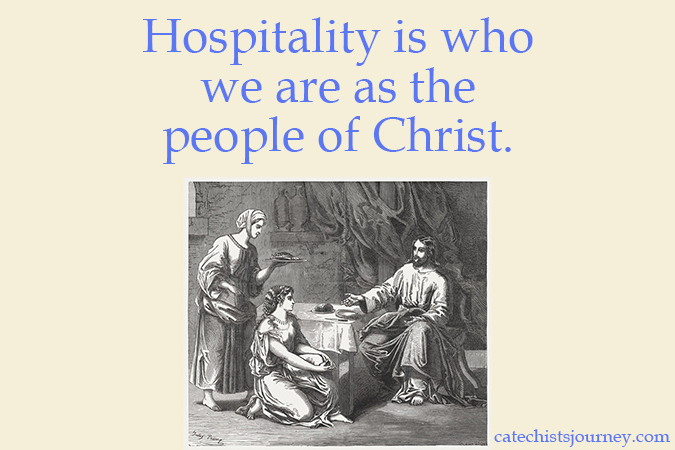
In the Gospel of Luke, we hear the story of Jesus’ visit to two sisters, Martha and Mary (Luke 10:38–42). Martha and Mary are presented in contrasting ways, but are they two sides of the same coin? Let’s take a look by exploring their story and its implications from a discipleship perspective.
Martha welcomes Jesus into her home. Martha’s sister Mary seats herself at the feet of Jesus to listen to him speak. Martha, who had been “distracted by her many tasks” (Luke 10:40) goes into the room where Jesus is speaking and demands that Jesus tell Mary to help her! But instead of doing as Martha asks, Jesus reminds her that she is worried and distracted by many things, but “there is need of only one thing.” (10:42). Mary had chosen the better place to be, with him.
This short story holds three lessons for all who are striving to be missionary disciples .
1. Set the stage for an encounter with Jesus through hospitality.
While many authors focus on the interaction that took place at Martha’s house, the opening lines of this story are incredibly significant from a discipleship perspective. Martha, with great boldness and generosity, throws open the doors of her home to Jesus. Martha and Mary’s encounter with Jesus would not have been possible without her hospitality. This is an important lesson for us: hospitality always sets the stage for an encounter with Jesus Christ. This is especially true of parish hospitality. Unfortunately, hospitality has become synonymous with coffee and donuts after Mass or relegated to a committee such as the stewardship committee or the hospitality committee. Not only has this mindset absolved us of the need to go out of our comfort zone to welcome others, but it also reinforces the mindset that hospitality is something only certain people do. Hospitality is who we are as the people of Christ. Martha reminds us that it is the responsibility of every person to help facilitate encounters with Jesus through generous living.
2. Be bold in prayer.
A striking element of this story is Martha’s attitude in addressing Jesus. Clearly frustrated with her sister’s lack of support in the kitchen, she speaks to Jesus with boldness and in fact, issues him a command: “‘Lord, do you not care that my sister has left me to do all the work by myself? Tell her then to help me.’” (Luke 10:40) While we may think that Martha was out-of-line in her tone and approach, Scripture reminds us that “we have access to God in boldness and confidence through faith in [Jesus Christ].” (Ephesians 3:12) We can approach God our Father in our prayers with the same spirit of boldness and confidence, although knowing that his will be done, not ours.
3. Dwell in the Word.
In life and in ministry, there will always be distractions and much to do. But we are human “be-ings” and not human “do-ings” for good reason. Martha, in her desire to make sure that everything was prepared and ready, forgets that the most important thing is to be present to Jesus. The greatest gift we have been given is Jesus’ presence in Sacred Scripture and the Blessed Sacrament. We can often forget that when we are busy with our various ministries. As disciples, one of the best ways to be nourished and strengthened is through Scripture. The Word is welcomed, not as a human word but the Word of God. It is God’s intended gift to us that gives us the strength to arise each day. Being nourished by the Word gives us the strength to focus and set aside distractions so that we can hear the voice of God in our daily lives.
At one time or another, we have all been a bit of a Martha in our walk of discipleship. The popular expression “missing the forest for the trees” is a good reminder to slow down and to set aside all other distractions so to be truly present to every person we meet.
What lessons of discipleship do you take from Martha and Mary?
- discipleship
- welcoming people
Related Articles
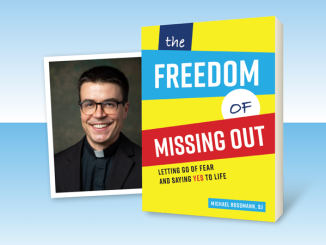
Replacing a Fear of Missing Out with the Freedom of Missing Out

Discipleship Pledge Cards for Pentecost
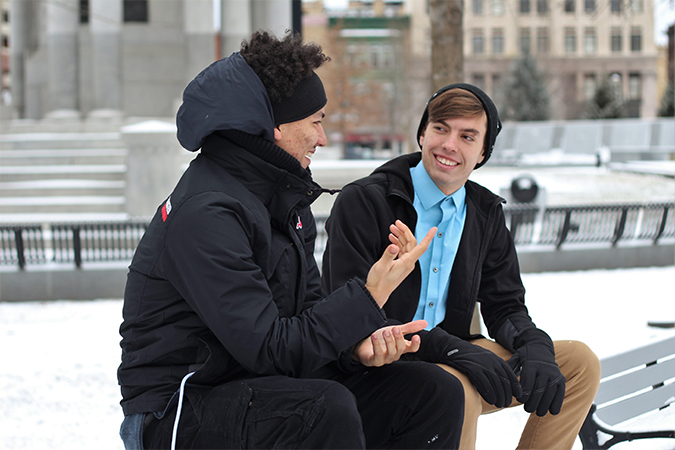
Accompaniment: Giving People the “Time of Day”
Be the first to comment, leave a reply cancel reply.
Your email address will not be published.
Copyright © 2006-2024 Loyola Press. All rights reserved. Any copying, redistribution, or retransmission of the contents of this service without the express written consent of Loyola Press is expressly prohibited.
Search form
- United Church of God
- About the United Church of God
- Fundamental Beliefs
- I'm New
- This is the United Church of God
- A Brief History
- Newest Content
- Program Archive
- Station Listings
- Get Free Subscription
- Confirm Subscription
- Renew Subscription
- Cancel Subscription
- Change Address
- Breaking Free
- This Is The Way
- UCG Short Films
- Bible Commentary
- Bible Questions and Answers
- Bible Study Course
- Bible Study Aids
- Family Study Guides
- Study by Topic
- Teen Bible Study Guides
- Video Bible Studies
- Congregations
- Sermon Search
- Sermon Series
- Newest Updates
- Archived Issues
- Church Activity Calendar
- Holy Day Calendar
- General Conference of Elders
- 2024 Festival Locations
- Feast Updates
- Cancel My Registration
- 2023 Webcasts
- Winter Family Weekend
- Jelly Books
- Poly Col y Toly
- Compass Check
- United Youth Camps
- Ambassador Bible College
- Study Papers
- Planned Giving
- Website Help
Profiles of Faith: Mary & Martha - Lessons from Two Sisters
You are here, profiles of faith, mary & martha - lessons from two sisters, login or create an account.
With a UCG.org account you will be able to save items to read and study later!
Sign In | Sign Up
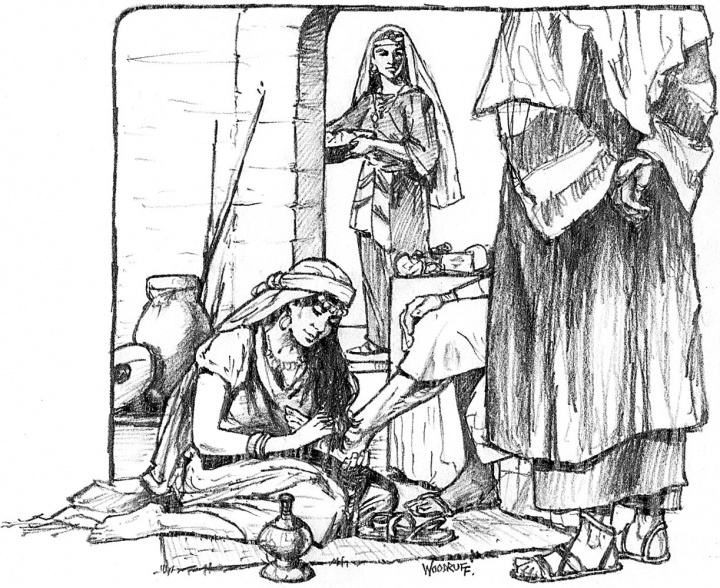
Jesus and His disciples arrived at the home of Lazarus, Mary and Martha about mealtime. It was Martha who invited them in. Nothing is said in the Bible account about the cordial greetings they exchanged, but an important lesson was recorded during that visit that should positively affect us.
Notice the exchange between Jesus and Martha:
"She [Martha] had a sister called Mary, who also sat at Jesus' feet and heard His word. But Martha was distracted with much serving, and she approached Him and said, 'Lord, do You not care that my sister has left me to serve alone? Therefore tell her to help me.' And Jesus answered and said to her, 'Martha, Martha, you are worried and troubled about many things. But one thing is needed, and Mary has chosen that good part, which will not be taken from her' " (Luke 10:39-42).
Scripture doesn't record whether Jesus' response made a lasting impression on Martha's understanding, but we can hope this spiritual lesson—so inseparably linked to our priorities—will favorably impact us.
What did Mary have that Martha needed? What was the "good part" Mary chose? Why will the good part that Mary chose remain hers forever?
In a world filled with distractions, the story of Mary and Martha can help you set your life in order.
Home away from home
The Gospels record that Jesus felt comfortable in the home of Mary and Martha and their brother Lazarus. The four weren't just acquaintances; they were close friends.
Earlier, when Jesus had come to resurrect Lazarus from the dead, He showed great respect and love for Mary and Martha (John 11:3, John 11:20-39). They spoke to Jesus as if He were a part of their immediate family. Jesus was so troubled by their anguish over their brother's death that He was moved to tears before raising Lazarus to life again (John 11:33).
Luke's account also shows the closeness between Jesus and this family. "Now it happened as they went that He entered a certain village; and a certain woman named Martha welcomed Him into her house" (Luke 10:38). Jesus was at ease with Mary, Martha and Lazarus. Their home, at Bethany just outside Jerusalem, might have been considered Jesus' home away from home.
But, though Jesus felt a deep affinity for all three, their personalities and perspectives differed.
Martha's view of life
When we visit friends and relatives we have a good idea of how they think and act. Jesus was no different. He appreciated the differences among His three friends and felt comfortable enough to offer constructive advice as to their priorities.
Martha's outlook on life was quite different from Mary's. It is possible that Martha was older and that her age figured into her personality and perspective. Martha's words and actions depict her as practical and efficient. Nothing is wrong with being practical and efficient if it doesn't interfere with the more important things in life. If it does, it can become a problem. God recorded important examples for us in Scripture (1 Corinthians 10:11), so we can learn from Martha's and Mary's recorded actions.
Martha appears to be the leader and the more hospitable and social of the two: "Now it happened as they went that He entered a certain village; and a certain woman named Martha welcomed Him into her house" (Luke 10:38).
Mary's outlook
"And she had a sister called Mary, who also sat at Jesus' feet and heard His word" (Luke 10:39). If one were to read no further, one could assume Mary may have been a little lazy, leaving the needs of hospitality and hostess to her gregarious sister. It was Martha who invited Jesus into their home. It was Mary who simply sat at Jesus' feet, listening to Him talk. Who was the more hospitable, the more sociable? Who was more concerned about serving her Savior, Martha or Mary?
This attitude, outlook and perspective is the kind of approach God desires in all His disciples. Jesus highly regarded Mary's approach.
Maybe Mary was shy. But we should consider Jesus' evaluation of Mary's actions. "But Martha was distracted with much serving, and she approached Him and said, 'Lord, do You not care that my sister has left me to serve alone? Therefore tell her to help me.' And Jesus answered and said to her, 'Martha, Martha, you are worried and troubled about many things. But one thing is needed, and Mary has chosen that good part, which will not be taken away from her' " (Luke 10:40-42).
To better understand Mary's actions, let's read details in John's account of that same visit.
"Then, six days before the Passover, Jesus [and the disciples] came to Bethany, where Lazarus was who had been dead, whom He had raised from the dead. There they made Him a supper; and Martha served, but Lazarus was one of those who sat at the table with Him. Then Mary took a pound of very costly oil of spikenard, anointed the feet of Jesus, and wiped His feet with her hair. And the house was filled with the fragrance of the oil" (John 12:1-3).
John emphasizes here that Mary was so humble, convicted and dedicated to Jesus and His teachings that no expense or personal act was too great or demanding for her to honor her Savior. This attitude, outlook and perspective is the kind of approach God desires in all His disciples. Jesus highly regarded Mary's approach.
It is illuminating to contrast Mary's reverence with Martha's demeanor. Martha was so comfortable with Jesus that she openly included Him in her frustration. Her words "Do You not care?" and "My sister has left me to serve alone" show her frustration. For Martha to intimate that Jesus didn't care whether Mary was not helping shows both a close relationship and considerable forthrightness. Martha didn't suggest to Jesus that He ask Mary to help her; she told Him directly to "tell her to help me." Martha put the onus of responsibility for serving a meal, to her the most important of all responsibilities, on Jesus.
Jesus responded forthrightly but tenderly: "Martha, Martha, you are worried and troubled about many things" (Luke 10:41). Martha was fretting over something quite important to her: providing a meal for Jesus and His disciples. But how important was this compared with other priorities?
Choices in life
Jesus continued: "But one thing is needed, and Mary has chosen that good part, which will not be taken away from her" (Luke 10:42).
Jesus said Mary made a conscious decision between two alternatives: She chose listening to Jesus over preparation of a meal. This may sound strange to those who, like Martha, think meal preparation is more important than visiting. But couldn't that depend on who the guest is? The most pressing need in Martha's eyes was that of preparing a meal for Jesus and His disciples. Mary saw this situation differently. She chose to listen to the wisdom of Jesus, her Savior, while she had the opportunity.
People make choices. They are a part of life. The prophet Moses declared: "I call heaven and earth as witnesses today against you, that I have set before you life and death, blessing and cursing; therefore choose life, that both you and your descendants may live" (Deuteronomy 30:19). Our daily choices affect our lives, and the end result of this life is determined by the choices we make every day. Jesus said Mary chose "that good part."
The good part we need
We have to make a choice as to whether we seek the good part. Jesus tells us our highest priority in life should be to "seek first the kingdom of God and His righteousness . . ." (Matthew 6:33).
He also gives us guidance in how to do that: "Man shall not live by bread alone, but by every word of God" (Luke 4:4; compare Deuteronomy 8:3). He adds, "The words that I speak to you are spirit, and they are life" (John 6:63).
For Mary, Martha, Lazarus and the 12 disciples, the Word of God was in their presence in the person of Jesus Christ (John 1:14-15). Apparently Mary knew that Jesus' words were the most important needs of her life. Jesus recognized this when He reminded Martha that her life was taken up with many secondary needs, but her greatest need was that which Mary acknowledged: the words of eternal life (John 6:68).
The book of Hebrews tells us the importance of hearing and heeding the words of life: "Therefore we must give the more earnest heed to the things we have heard, lest we drift away. For if the word spoken through angels proved steadfast, and every transgression and disobedience received a just reward, how shall we escape if we neglect so great a salvation, which at the first began to be spoken by the Lord, and was confirmed to us by those who heard Him" (Hebrews 2:1-3).
The good part lasts forever
What did Jesus mean when He spoke of "that good part, which will not be taken away from her"? (Luke 10:42). The apostle John answers this question: "All that is in the world—the lust of the flesh, the lust of the eyes, and the pride of life—is not of the Father but is of the world. And the world is passing away, and the lust of it; but he who does the will of God abides forever" (1 John 2:16-17; compare 2 Peter 3:10-12).
God's truth and laws will abide forever. Our bodies won't last forever, for they must be replaced with spirit bodies. The spiritual knowledge we accumulate in this life will be ours forever, never taken away from us. But we must not allow physical needs and duties to consume us.
Like Mary, we need patient faith, that in a world hell-bent on destruction, filled with frivolous trappings and empty, momentary sensual pleasures we can keep the good part forever: "Here is the patience of the saints; here are those who keep the commandments of God and the faith of Jesus" (Revelation 14:12).
Mary and Martha were Jesus' good friends. Martha stayed busy supplying her guests with things that made their visit more comfortable. She should be commended for seeing to the important needs of others.
But Jesus commended her sister Mary. Jesus noted, in effect, that Martha stayed busy with form, but that Mary concentrated on substance. He commended Mary for choosing the good part, the holy words, truth and faith of Jesus Christ, which will never be taken from her. We should follow Mary's example and desire God's truth above everything else.

Jerold Aust
Jerold Aust has served in the ministry for 52 years, as a public speaker for 58 years, a published writer for 38 years, and is employed by UCG’s Media and Communications Services. He is a Senior Writer, interviewer, and editor for Beyond Today Magazine and has taught Speech Communication for UCG’s ministerial online program and the Book of Revelation for ABC.
How to go to Heaven
How to get right with god.

Who was Martha in the Bible?
For further study, related articles, subscribe to the, question of the week.
Get our Question of the Week delivered right to your inbox!


- Christianity
- Denominations
- Holy Spirit
- Jesus’ Love
- Privacy Policy
How Did Jesus Know Mary, Martha, and Lazarus?
- by Ethan Davis
- November 18, 2023 November 20, 2023

Have you ever wondered how Jesus knew the intimate details about Mary, Martha, and Lazarus? This intriguing question has perplexed many, and in this article, we will dive into the possible explanations and significance of this knowledge. Brace yourself for a mind-bending journey through biblical mysteries and human relationships.
Who Were Mary, Martha, and Lazarus?
Mary, Martha, and Lazarus were siblings who had a close relationship with Jesus. They were residents of the village of Bethany and were known for their hospitality. Mary was often found sitting at Jesus’ feet , eager to listen and learn from him. Martha, on the other hand, was more focused on serving and taking care of their guests. Lazarus was a dear friend of Jesus who fell sick and died , but Jesus miraculously raised him from the dead. Their story demonstrates the deep bond they shared with Jesus and the power of his love and compassion.
What is the Relationship Between Jesus and Mary, Martha, and Lazarus?
The relationship between Jesus and Mary, Martha, and Lazarus was a close one based on friendship and mutual respect. In the Bible, it is mentioned that Jesus often visited their home in Bethany and had a deep bond with each of them. Mary was known for her devotion and sat at Jesus’ feet to listen to his teachings. Martha was a hospitable hostess who served Jesus and his disciples . Lazarus, who fell ill and died, was later raised from the dead by Jesus. Their relationship demonstrated the love and compassion Jesus had for his friends , specifically for Mary, Martha, and Lazarus .
How Did Jesus Meet Mary, Martha, and Lazarus?
Jesus met Mary, Martha, and Lazarus through their mutual friendship with each other. Here are the steps of how they met:
- Step 1: Mary, Martha, and Lazarus lived in the town of Bethany.
- Step 2: Jesus often visited Bethany while traveling with his disciples .
- Step 3: Mary, Martha, and Lazarus welcomed Jesus into their home.
- Step 4: They developed a close bond with Jesus through their interactions and conversations, ultimately leading to a strong friendship.
Pro-tip: Building genuine relationships can lead to meaningful connections and opportunities for growth. Taking the time to welcome others with kindness and hospitality can create lasting friendships.
What Are the Stories Involving Jesus and Mary, Martha, and Lazarus?
The relationship between Jesus and the siblings Mary, Martha, and Lazarus has been a topic of fascination and speculation for centuries. In this section, we will examine the various stories involving Jesus and these three individuals. From the miraculous raising of Lazarus from the dead to the intimate visit to their home, we will explore the depth of their connection. Additionally, we will delve into the symbolic significance of Mary anointing Jesus ‘ feet with perfume.
1. Jesus Raises Lazarus from the Dead
The Bible recounts the significant event of Jesus raising Lazarus from the dead. Here are the steps involved in this miraculous story:
- Jesus receives news of Lazarus’ illness.
- Jesus intentionally delays his arrival in Bethany.
- Jesus comforts Martha and assures her that Lazarus will rise again.
- Jesus weeps at the sight of Mary and others grieving.
- Jesus prays to God and then calls Lazarus to come out of the tomb.
- Lazarus emerges, restored to life, and Jesus instructs others to remove his burial garments.
- Many witnesses believe in Jesus as a result of this miracle.
Similarly, there is a true story of a man named John who was pronounced dead after a car accident. However, through fervent prayers by his family and friends, John miraculously revived, just as Lazarus did. This story showcases the power of faith and the miraculous intervention of Jesus in our lives .
2. Jesus Visits Mary and Martha’s Home
During Jesus’ visit to Mary and Martha’s home, several significant events took place. Here are the steps of what happened:
- Martha welcomes Jesus into their home and busies herself with preparations.
- Mary sits at Jesus’ feet, eagerly listening to his teachings during his visit.
- Martha becomes frustrated with Mary’s lack of help and asks Jesus to intervene.
- Jesus kindly responds to Martha, acknowledging her concern but emphasizing the importance of Mary’s choice to listen and learn during his visit.
- Jesus commends Mary for choosing the “better” part, which is focusing on spiritual nourishment during his visit.
- This event highlights the value of prioritizing spiritual growth and learning from Jesus ‘ teachings during his visit to Mary and Martha’s home.
3. Mary Anoints Jesus’ Feet with Perfume
During a dinner at the home of Mary, Martha, and Lazarus, Mary performs a loving and devoted act by anointing Jesus’ feet with expensive perfume.
- Mary takes a pound of expensive perfume, made of pure nard.
- She kneels down at Jesus’ feet, wiping them with her hair.
- The fragrance fills the entire house, attracting the attention of those present.
- Judas Iscariot objects, suggesting that the perfume could have been sold to help the poor.
- Jesus defends Mary, acknowledging her act as an act of love and preparation for his burial.
- He commends her, stating that her story will be told wherever the gospel is preached.
What Can We Learn from Jesus’ Relationship with Mary, Martha, and Lazarus?
The Bible tells of Jesus ‘ close relationship with three siblings: Mary, Martha, and Lazarus. Their bond serves as a powerful example for us to learn from and emulate. In this section, we will explore the lessons we can glean from Jesus ‘ relationship with these three individuals. From the importance of faith and trust in Jesus to the power of prayer and miracles, as well as the significance of hospitality and service, and the value of love and friendship, there is much we can learn from Jesus’ interactions with Mary, Martha, and Lazarus.
1. The Importance of Faith and Trust in Jesus
Having faith and trust in Jesus is crucial for a meaningful relationship with Him. Here are steps to understand the importance of faith and trust in Jesus:
- Study Scripture: Deepen your understanding of Jesus’ teachings to strengthen your faith.
- Prayer: Regularly communicate with Jesus, expressing your trust and seeking guidance.
- Reflect on Personal Experiences: Recall moments when faith and trust in Jesus brought you peace or answers.
- Community: Engage with like-minded individuals to share experiences and learn from one another’s faith journeys.
- Obstacles: Recognize and address doubts or challenges that may hinder your faith and trust in Jesus.
Remember, faith and trust in Jesus can bring comfort, guidance, and a sense of purpose to your life. Embrace the journey and enjoy a deeper connection with Him.
Jesus ‘ relationship with Mary , Martha, and Lazarus shows the power of prayer and miracles in our lives – and also the importance of having a solid resurrection plan.
2. The Power of Prayer and Miracles
The power of prayer and miracles plays a crucial role in the relationship between Jesus and Mary, Martha, and Lazarus. Through their stories, Jesus showcases his ability to perform miraculous acts through the power of prayer. A notable example is when Jesus brings Lazarus back to life, demonstrating his authority over life and death. Another instance is when Mary anoints Jesus ‘ feet with perfume, symbolizing her unwavering faith in Jesus’ divine power. These stories emphasize the significance of having faith in Jesus and the miraculous transformations that can occur through prayer.
Jesus never turned down a dinner invitation, especially if it came with a side of service and hospitality from Mary, Martha, and Lazarus.
3. The Importance of Hospitality and Service
Hospitality and service were central values in Jesus’ relationship with Mary, Martha, and Lazarus. Their home was a welcoming and caring place where Jesus found comfort and support.
In one instance, Martha was busy serving while Mary sat at Jesus’ feet, both actions highlighting the significance of hospitality and service in different ways. Jesus commended Mary for choosing to listen and learn, demonstrating that hospitality is not just about physical tasks but also about creating an environment of spiritual nourishment . This teaches us that hospitality and service are essential elements in our relationships with others, allowing us to express love, kindness, and selflessness.
Suggestions for fostering hospitality and service include:
- Offering a helping hand to those in need.
- Opening our homes to others.
- Showing genuine care and compassion towards others.
4. The Importance of Love and Friendship
Love and friendship were crucial aspects of Jesus’ bond with Mary, Martha, and Lazarus. Their relationship served as a powerful example of the significance of these values in our own lives. Through his interactions with them, Jesus taught us the importance of love and friendship in the following ways:
- Support and Care: Jesus displayed deep compassion and care for Mary, Martha, and Lazarus, showing us the importance of being there for one another in times of need.
- Emotional Connection: Their relationship emphasized the value of emotional connection and understanding in friendships, creating a sense of belonging and mutual support.
- Loyalty and Trust: Jesus’ friendship with Mary , Martha, and Lazarus highlighted the significance of loyalty and trust in building strong relationships.
- Shared Joy and Sorrow: Jesus celebrated their joys and provided comfort in their sorrows, reminding us that true friendship involves being present in both good and challenging times.
By observing Jesus’ relationship with Mary, Martha, and Lazarus, we can learn the importance of fostering love and friendship in our own lives for greater fulfillment and support.
Frequently Asked Questions
How did jesus know mary, martha, and lazarus.
Jesus had a close relationship with the siblings Mary, Martha, and Lazarus, as they lived in the same village of Bethany and often welcomed Jesus into their home. It is believed that Martha and Mary’s brother Lazarus was a friend and follower of Jesus , which is how Jesus came to know them.
Did Jesus have a special relationship with Mary, Martha, and Lazarus?
Yes, it is believed that Jesus had a special relationship with the siblings. In the Bible, there are several instances where Jesus is seen spending time with them, sharing meals, and even performing miracles for them. This indicates a close and loving bond between Jesus and Mary, Martha, and Lazarus.
How did Jesus show his love for Mary, Martha, and Lazarus?
Jesus showed his love for the siblings in many ways, including sharing meals with them, comforting them in their time of grief, and ultimately, by performing the miracle of raising Lazarus from the dead. This shows the depth of his love and compassion for his friends.
Why did Jesus visit Mary, Martha, and Lazarus’ home?
Jesus often visited Mary, Martha, and Lazarus’ home in Bethany as they were his dear friends and followers. It was a place where he could rest and find comfort among his loved ones. Additionally, Bethany was only a few miles from Jerusalem, making it a convenient stop for Jesus during his travels.
What was the significance of Jesus’ relationship with Mary, Martha, and Lazarus?
The relationship between Jesus and Mary, Martha, and Lazarus holds great significance in the Bible. It shows Jesus’ humanity and his ability to form close bonds with his followers. It also serves as an example of the love and compassion that Jesus has for all of his children, regardless of their social status or background.
How does the story of Jesus, Mary, Martha, and Lazarus continue to impact people today?
The story of Jesus, Mary, Martha, and Lazarus continues to impact people today by reminding us of the power of faith and the love of Jesus. It serves as a reminder that even in our darkest moments, Jesus is always with us, and his love and miracles can bring new life and hope into any situation.

Ethan Davis
Ethan Davis, the founder of Jesus Salvation, transformed his life from hardship to faith after a significant encounter at age 32. After earning a Communications degree from Kansas State University, he established JesusSalvation.com to help others towards salvation, sharing inspiring stories, scriptures, and prayers.
Registration open for "Tell Her Story: Women in Scripture and History!" Early bird ends April 15 at 11:59 pm Click here to learn more!
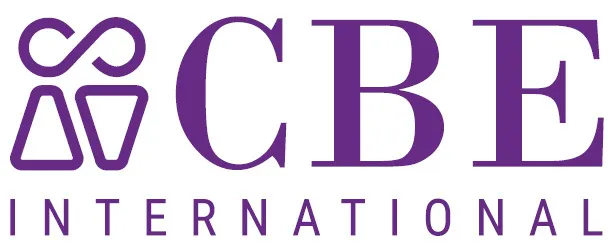
- Denver 2024
- Login to Courses
- Available Courses
- Mutuality Matters Podcast
- Priscilla Papers (Academic Journal)
- Mutuality (Blog + Magazine)
- Special Publications
- Non-English Resources
- Conferences
- Advocating at Patriarchal Events
- Bible Translation
- Preventing Abuse
- Scholarships for Women
- Online Voices
- Partnering in Africa and Beyond
- Information and Registration
- Become a Sponsor and Exhibitor
- Scholarship Application
- Support Denver 2024
- Review Books
- Christian Events
- Pray with Us
- Find or Start a Chapter
- Subscriptions
- Become a Church and Organization Member
- Advertise with Us
- Honor Someone
- Ways to Give
- Work or Intern for CBE
- Write for CBE
- Publishers and Authors
- Visit the Bookstore

- Type: Academic Article
Published Date: April 30, 2012
- Mary Stromer Hanson
Featured Articles
4 ways complementarian churches can be better for women, paying attention to fatherhood: why i stepped down from pastoral ministry, a single testimony changes generations, like what you’re reading.
Priscilla Papers
Get notified when new issues are online.
CBE Abuse Resource

Mary and Martha
Leadership in unlikely places.
If one were seeking nominations for a leadership position, Mary of Bethany, as judged by human criteria for leadership, would not likely be a person to get the nod. Faced with the death of her brother in John 11, she appears to be overcome by nearly catatonic sorrow. Upon approaching Jesus, she falls at his feet and mouths words identical to those with which her sister had greeted him moments before: “Jesus, if you had been here, my brother would not have died” (11:32). Her more vocal sister is the one who takes command of the situation; Martha anticipates Jesus’ entry into the village and approaches him without waiting to be called. In the face of tragedy, she maintains the necessary composure to engage in a theological discussion that eventually results in Jesus’ “I am” statement. Martha’s confession is held up as the equivalent of Peter’s confession in the Synoptics and John’s purpose statement in 20:31.
Likewise, in Luke 10:38–42, according to the traditional interpretation, no words come from Mary, apparently setting a positive example by her actions alone. Martha aggressively pursues Jesus for a solution to her sister’s absence and asks Jesus to intervene. Readers of both gospels may conflate the characterization of the sisters as they are portrayed in each book. If Martha is the outgoing and vocal sister in Luke, then that is the expected personality in John, and because Mary is visualized as silent in Luke, sitting passively at Jesus’ feet, she is characterized as the more devout of the two in John. 1 If a reader is looking for a leader by drawing upon both Luke and John, again one can safely assume it would be Martha. Yet, Jesus twice commends Mary’s behavior (Luke 10:42; John 12:7). Consistently over many centuries of Christian interpretation, Mary is repeatedly held up as the sister to be emulated. What kind of example is Jesus extolling for women? Could it be possible that “silent leadership”—by actions only, but otherwise without voice or opinion—is the illustration of leadership that Jesus recommends for women and the best use of their gifts?
After reading many commentaries, devotions, and sermons on Luke 10:38–42, I am particularly discomforted by conclusions that set the sisters against each other with the eventual “good and bad” result. The lesson taught is invariably, “Be more like Mary and less like Martha.” One woman is raised up at the expense of the other. These results are then inevitably carried over into the sisters’ appearance in John 11, but are rarely examined in the haste to get to the miraculous sign: the raising of Lazarus. The story seems to be about the male characters, with the sisters’ roles barely noticed, unless it is to point out again, “Mary got it right.” Many such dissonances launched a journey that resulted in my writing on the identity of Mary of Bethany. I started my research with particular interest in uncovering any additional information about who she was and her behavior that Jesus actually commended. This topic was narrowed down to study specifically her narrative function through the lens of narrative criticism. My journey to uncover the mystery of Mary led to the discovery of two leaders, both approved and promoted by Jesus.
Can leadership be found in surprising places, in unlikely humans (female), hidden in the shadow of a more momentous event? I will pursue the premise that Jesus commissioned both sisters to demonstrate equally valid and essential leadership to make the result of his final sign most effective. The sisters together are ministering to different “flocks,” demonstrating “good and good.” Together, they make access to Jesus’ greatest statements of his identity available to the maximum possible number of followers.
To begin, if we strip away the “sister versus sister” preconception brought by earlier interpreters to the study of both Luke and John, whole new lessons begin to emerge. There are several subtle hints in John’s text of more taking place in their individual interactions with Jesus than was immediately apparent. The main tool I am applying to the text is narrative criticism, also known as literary criticism, which focuses on a close reading of the surface structure of a text. R. Alan Culpepper notes that narrative criticism is an inductive method where the interpreter works from observation of the text being studied. 2 This criticism was adapted to the study of biblical texts from the secular study of literature. Narrative criticism addresses the literary devices used by the author to create the desired effect on the reader. 3 The critic looks at the unified text in its final form and reads holistically. 4 Of particular interest in this narrative are plot, timing, movement, theme, motifs, repetition, and development of characters.
As I carefully examined the “when and where” of each character in John 11, a subtle but surprising prominence is given to Mary. At the very beginning of the Lazarus account, this tendency is already apparent, as the setting is identified as the village of Mary and her sister Martha. Worth noting is that the male character is introduced by his relationship to the female characters, contrary to typical Greco-Roman literature. 5 Also, in Hebrew culture, it is unusual for the sisters to take the initiative in the care of the male member of the family, contrary to the customs in patriarchal family structures. Why does the narrator mention Mary first and then introduce Martha in relationship to her?
John 11:2 includes a literary device known as a prolepsis, which refers to an event that is yet to occur in the text: “This Mary, whose brother Lazarus now lay sick, was the same one who poured perfume on the Lord and wiped his feet with her hair.” The narrator provides a sort of poke in the ribs to make the readers aware that they should be especially engaged in this story because it concerns someone they already know. The author presumes that the upcoming anointing act of Mary was known to readers either by oral tradition or from an earlier written source. Surprisingly, John does not assume his implied readers are “insiders” concerning knowledge about the Lazarus event.
The Gospel of John was written perhaps two generations after the occurrence of Mary’s anointing of Jesus. Why would the implied readers of the last quarter of the first century be expected to have previous knowledge of Mary of Bethany? They knew of this Mary and were expected to be eager for more information about her. Yet, it would seem reasonable that they would also already know Lazarus, because he was the reason for the dinner event.
The commentaries have come up with various theories concerning this prolepsis. The first possibility considered is that the remark was inserted by later editors. 6 Numerous expositors consider the second possibility that Mary is so well known by the act of her anointing that she can be referred to even before the event is recorded. 7 This would also indicate that the gospel was written to a community of believers already familiar with an anointing story. These same commentators often point out that, even if the readers were not assumed to know the upcoming anointing narrative, it is a good literary device to draw special attention to Mary. O’Day and Hylen summarize this observation: “By pointing forward to the story of Mary’s anointing of Jesus, the passion comes into view and begins to shape the reader’s understanding of Lazarus’s story.” 8 A third possibility is that the gospel writer is assuming that his implied readers know of the story from reading the synoptic narratives of Mark 14:3–9 or Matthew 26:6–13. This points out that, although Mary of Bethany was not mentioned by name, now John is revealing her name, which was withheld in the gospels that were written earlier. 9 Indeed, in Mark’s account, Jesus said, “Truly I tell you, wherever the gospel is preached throughout the world, what she has done will also be told, in memory of her.” It would be very disappointing if the name of the woman who should be so memorialized was forgotten. A speculative fourth possibility is that the Johannine community is familiar with the story of the anointing woman from Luke 7:36–50, which takes place earlier in Jesus’ ministry. Could this have been Mary at her conversion? This one act then became well known. She repeated an anointing at the Lazarus dinner before passion week.
Continuing in John 11, the next several verses describe Jesus “across the Jordan” (10:40) receiving news from a messenger that “the one you love is ill.” The assurance of Jesus’ love for this person creates immediate discomfort by his lack of follow-up action. The narrator builds tension by noting that Jesus does not go immediately to the aid of his friend, but waits two days before departing. This delay is an example of a motif throughout the entire gospel when Jesus determines his own timing of events. 10 His ultimate purposes are not determined by human time.
In John 11:19, Martha receives the first literary mention: “Many Jews had come out to Martha and Mary.” Although Martha is mentioned first in 11:19 and approaches first in 11:20, Mary was mentioned first in the opening of the pericope at 11:1, indicating that she was better known. It may be that Mary’s role in the narrative is second not because it is secondary, but because it is climactic. 11 When Martha heard that Jesus was approaching the village, she went out to meet him, but Mary stayed at home (11:20). John appears to be keeping the sisters in a power balance.
Why does Jesus pause outside the village and not immediately accompany Martha to the house? Perhaps, Jesus intentionally was delaying the time when he would face the Jews who were an unknown entity to him—were they friendly or antagonistic? Cultural- historical background informs us that, according to Jewish custom, relatives of the deceased are said to sit shiva for a week following a death. 12 Close friends and family came to visit those grieving, who remained seated in their house for this mourning time. Mary apparently was reluctant to break this tradition, but Martha did not hesitate. Perhaps, “Jesus had determined that the time of his public self-disclosure before the Jews was past.” 13
Whatever the reasons, because Jesus remained on the edge of the village, he had opportunity for private conversation and the confession of Martha. As appears evident from Martha’s communication to Mary, “The teacher is here and wishes to speak to you,” Jesus’ greater concern is private contact with those he loved. “Calling” is also a motif in John; Jesus called Mary as he calls his “sheep” (10:3) and his disciples. Jesus again determines the timing of events. When Jesus asks for Mary, it sets into motion the actual performance of the miracle. Note that, between the sisters, they refer to Jesus as “the teacher.” They had both spent time with him as students, and the fact that they are women is not even particularly notable.
“The Jews” are mentioned prominently in John 11–12 and appear to influence every event. It is important to realize that all of the main characters of the gospel are ethnic Jews. After Jesus and the disciples receive the news of Lazarus’s illness, they express worry about Jesus’ safety as they attempt to dissuade Jesus from returning to Jerusalem, “because the Jews recently tried to stone him” (11:8). Ominously, Thomas builds more tension by pointing out that the Jews likewise threaten the lives of the disciples. To complicate matters, Jews have come out from Jerusalem to comfort the grieving family, but some of them also report Jesus’ actions back to the Pharisees. Notably, after the raising of Lazarus, some Jews are said to believe (11:45). As a result, the Jewish authorities not only plot to kill Jesus (11:50), but also to put Lazarus to death. The Jews related the death of Lazarus to the previous healing of the man born blind in chapter 9 by noting in 11:37, “Could not he who healed the blind man have saved Lazarus?” The dispute with the Jerusalem Jews in chapter 10 thereby adds more depth to chapter 11 by connecting them with the Lazarus miracle. By 12:53, the threat turns into a formal sentence on Jesus’ life.
Raymond Brown has distinguished between different subgroups of Jews, some of whom are believers in Jesus, but do not publicly profess out of fear. 14 Another group is those Jews who were believers publicly, but lacked real faith or knowledge (6:66); the brothers of Jesus in 7:3–5 could be an example. An important piece of information when looking deeper into this pericope is that “the Jews from Jerusalem” who came out to comfort Mary are not a monolithic group, but are in various states of belief or antagonism concerning Jesus.
Looking at this from a narrative-critical perspective, one makes particular note of the movements of characters across the landscape. Martha is able to leave the house to meet Jesus without attracting attention; she slips out either without anyone noticing or caring about her activity. On the other hand, when Mary leaves the house, “The Jews who had been with Mary, consoling her, noticed the haste with which she got up and left, and they all followed her, supposing she was going to the tomb to mourn” (11:31). How is it that Mary attracts this notice from the Jerusalem visitors and Martha does not?
Remarkably, both sisters approach Jesus with the same remark. As the narrative unfolds, both greet Jesus with the same observation: “If you had been here my brother would not have died.” One could imagine that the conversation in the house between those consoling Mary and Martha was dominated by the question, “Where is Jesus?” It is possible that this line of thought was echoing in the sisters’ minds and is first to their lips as each approaches Jesus. More intriguing is the point that the writer is trying to make by having the narration frame the sisters’ approach with this particular remark repeated twice.
In narrative criticism, attention is paid to the frequency with which a character is noted. In verses 11:28–33, an unusual concentration of Mary’s name and feminine pronouns occurs that draws special attention to her relationship with the Jews: 15 “And after she had said this, she went back and called her sister Mary aside. The Teacher is here, she said, and is asking for you (28). When Mary heard this, she got up quickly (29). When the Jews who had been with Mary in the house, comforting her , noticed how quickly she got up and went out, they followed her , supposing she was going to the tomb to mourn there (31). When Mary reached the place where Jesus was and saw him, she fell at his feet (32). When Jesus saw her weeping, and the Jews who had come along with her also weeping, he was deeply moved in spirit (33).” Narratively, the number of times she is mentioned in connection with the Jews is the author’s indication of her importance and relationship to the Jews, but gives no hint as to the reason.
I was particularly intrigued with the observation in verse 33 that Jesus made special notice of Mary’s weeping. Is not Martha also weeping? Whether or not she is, Mary’s weeping and the weeping of those with her are what seem to move Jesus to his emotional reaction. Could it be that Mary’s weeping brings to Jesus’ memory an earlier incident of her washing his feet with her tears (Luke 7:36–50)? This is a tentative connection, but may be worth noting.
Following immediately after the resurrection of Lazarus, a text appears to omit inadvertently the mention of Martha (or so the few commentaries that actually note the omission seem to understand it). In 11:45, we find the offhand remark, “Therefore, many of the Jews who had come to visit Mary, and had seen what Jesus did, put their faith in him.” Only one commentary I found ventures a reason for Mary’s solo notice: “It may be that Mary is the only one mentioned because she was better known among John’s readers.” 16 The author, Leon Morris, goes on to give the reason that perhaps “she was more emotional, and therefore not as resilient as Martha and thus was more in need of help from others.” 17 The few words “who had come to visit Mary” could have been omitted with no loss to the sentence. The end result is that many of the Jews, who saw Jesus’ sign, became believers. Somehow, Mary has an importance or fame attached to her that remains a mystery.
As John recounts this narrative to believers many years later, what is the importance of these details he chose to emphasize? Mary of Bethany had many resources available to her; she had no apparent financial concerns, she had a special friendship with Jesus, she had siblings, she had access to Jesus’ teaching, and she lived close to Jerusalem. Sandra Schneiders notes that Mary of Bethany is the literary means for the Jews’ arrival on stage for the raising of Lazarus. 18 Colleen Conway adds that John 11:31 gives the first indication of one of the roles that Mary will play in the narrative: “Unbeknownst to the Jews, she is actually leading them to Jesus.” 19
The climax of narrative tension occurs in 11:42, when Jesus prays out loud, “I knew that you always hear me, but I said this for the benefit of the people standing here, that they may believe that you sent me.” Jesus had master-planned the entire Lazarus narrative with the goal of bringing as many people as possible out into the open, that they might be brought to belief by the performance of his final sign. The attraction of many mourners had been set into motion at least four days earlier when Jesus waited before arriving in Bethany. Because of Lazarus’s death, the Jews from Jerusalem who had come to comfort the sisters had swelled to a crowd. They were already in place in Bethany when Jesus arrived. By not going directly to the house, he was able to call Mary to come to him, and with her came the many Jews consoling her. When he remained outside the house and arranged for the ensuing scene to occur outside, Mary was in effect leading the Jews to Jesus, which was more effective than his coming to them. They were then ready to witness Mary’s remark, her weeping and kneeling, which in turn released the emotional outburst of Jesus. Finally, they all proceeded to the tomb to witness the greatest and final sign of Jesus.
But what about Martha’s entrance, conversation with Jesus, and her confession? Does her role fade in comparison? It is impossible to determine how many people witnessed the conversation between Jesus and Martha. Perhaps some disciples were with Jesus, who had traveled with him from the “other side of the Jordan.” Someone relayed at least the outline of the conversation, including the confession, to John, or he was a witness himself. Martha seems to ask Jesus obliquely for a miracle (11:22), which she believes could be possible if Jesus wills it. In her prior experiences with Jesus, she knows and has witnessed that whatever Jesus asks from the Father he receives.
Martha’s remark, “I know he will rise again in the resurrection at the last day” (11:24), results in Jesus’ response, “I am the resurrection and the life.” The great role of Martha is provoking the revelation that Jesus makes about himself, which is recorded for all ensuing readers of the gospel, ancient and modern. Because Martha meets Jesus by herself, without a crowd pressing about, this intimate exchange is facilitated. All readers of the passage since have the benefit of this conversation and important disclosure of Jesus’ understanding of his impending death.
Still another important observation is that Jesus’ interaction with Martha precedes the actual carrying out of the sign. Normally, Jesus first performs the miracle and then provides the explanation. Therefore, Martha’s confession concerning Jesus as the Christ is absolutely not a result of witnessing the raising of Lazarus. Her confession is purely the response to Jesus revealing himself verbally as the “resurrection and the life.” 20 Likewise, Mary also confesses and worships Jesus physically by her actions. Neither Martha nor Mary needs a visible sign to facilitate belief.
Whether Jesus intended likewise to continue a discussion with Mary is unknown. Perhaps, it was not possible because of the crowd that followed her. Perhaps, he was looking for a verbal confession from Mary in front of the crowd, which did not happen. Perhaps, it happened just the way Jesus intended. What they did see was her worship and adoration at his feet. John recorded that both sisters greet Jesus with the same words, “Lord, if you had been here, my brother would not have died.” Jesus’ different responses to the identical statements make possible a parallel comparison between Jesus’ contrasting modes of consoling the mourners. In addition, imagine Jesus sighing, Do they really think I could not have healed Lazarus from a distance if that was my plan; I have done it before! Remember the official’s son of John 4:43–54. Jesus is already teaching them that, in the future, he will not always be with them physically, but present in Spirit.
Two women, two different leaders
Mary of Bethany’s most important role is as a leader of the Jews of Jerusalem. One may ask how this is possible, considering at first glance that Mary does not appear in the text in any obvious leadership roles. She is certainly not very vocal, and, when she does speak once, it is not her own spontaneous speech. Looking closer, I conclude that Mary is the reason for the Jews coming out to Bethany to meet Jesus and to witness the subsequent miracle. In 11:42, although Mary is not mentioned at this point, Jesus’ prayer spoken aloud to the Father proclaims, “For the sake of the crowd, so that they may believe that you sent me.” This statement makes clear that the presence of the crowd is important to the total scene. Jesus performs the sign, not only to restore a dead friend to life, but also to convince the Jewish onlookers of his identity. Mary is probably not aware of her importance in bringing a crowd to Jesus, but, without the “following” that she leads out to meet him, the number of Jewish witnesses and resultant believers may not have been so large.
Mary brings the Jews of Jerusalem to Jesus, enabling them to witness his power and demonstration of his identity for themselves. Mary, not as a reflection on her own understanding, but on that of the Jews to whom she ministers, led those out to Jesus who needed to see a “sign.” Mary by her example and actions shows who Jesus is and how he is to be worshipped.Mary’s leadership has now become obvious, but does Martha also have a leadership role? The narrative purpose for the sisters’ separate visits to Jesus becomes clear. Jesus gives two different responses appropriate for the two different ministries the sisters led. 21 They were working together. Martha was Jesus’ disciple, drawing on the portrayal from Luke, who ministers to “insiders”: those who visit her home, in the village, and among those who were already followers of Jesus: “To the Evangelist and his audience, Martha undoubtedly represented those who believed before they had seen everything of what Jesus’ ‘I am’ would come to mean.” 22 Martha’s audience consists of those who do not need the “signs” noted by John to be necessary for those with marginal belief, such as Thomas, who needed to “see” (20:29). Martha elicits self-revelation from Jesus and responds verbally in faith. She receives the “I am” statement from Jesus not only for her benefit, but also for the benefit of all readers since. Since the time Jesus left earth, every believer must believe without seeing:
“Blessed are those who have not seen and yet have believed” (20:29).
Applications
How many Christians past and present, when experiencing a tragedy, have cried, “Jesus, where were you? You weren’t here when I needed you. If you had been here, you could have prevented this.” The fact that both sisters are recorded as greeting Jesus with the same refrain may indicate that the author intends to illustrate two individual and uniquely appropriate responses to a tragedy. Martha and Mary ask exactly the same thing, and they invoke two different responses from Jesus. 23 In his private response to Martha, Jesus reveals his power and position. His public response to Mary is emotional as he matches her weeping. With Martha, he explains himself, and, with Mary, he shares tears. Notably, Jesus does not say, “If you believe in the resurrection, why are you wasting your time and your tears?” 24 Jesus does not reprimand anyone for crying. He understands each believer’s needs and allows for human sorrow. Showing emotions or questioning is not a sign of weak faith. Jesus affirms in the following chapters that he is always with his disciples, and they should trust him in his absence as when he is physically present. 25 “Abiding” is also one of John’s motifs. Jesus will be near and comfort even after the ascension, as he prepares his disciples for his absence. In this passage, he shows Mary and Martha that he was with them through the whole incident and will be in the future.
John is presenting both Mary and Martha as female disciples of Jesus who learn from him as students would learn from a rabbi, when Martha refers to him as the “Teacher” (11:28). Not only were they learning from him, but also putting their knowledge to use by actively leading ministries of their own. Both women are portrayed in leadership roles. Martha represents those early followers of Jesus to the Johannine community, just as Peter represents the disciples in Matthew 16:15–19. 26 Mary is shown as leading the Jews of Jerusalem out to Jesus (11:31), visibly demonstrating proper devotion and pointing them to the source of their salvation (12:3). In the next chapter, Jesus emphatically defends her role to Judas: “Let her alone” (12:7).
In John, Mary and Martha are different leaders of two groups of believers in different stages of understanding, even as they are struggling to understand their own grief. Women in leadership positions must meet those Christians to whom they are preaching and teaching wherever they are in their journey. Some believers need an object lesson and actual demonstration of how to worship and serve. Other Christians need a theology lesson, which Martha received and passed on to her circle of influence as well as to future generations. Different leaders may have a more appropriate style for each group, and those who are leaders should strive to know who they are and when to apply which leadership approach. Both Mary and Martha recognized who they were as disciples called by Jesus, and, even in their personal grief, both reinforced and shepherded their following as appropriate.
Models of leadership have too often conformed to worldly standards of what a leader should look like. The result has been much grief and disappointment, not to mention the loss of so much leadership talent in the church. The servant leadership of Jesus’ example has not been the preferred model; these are exactly the people who by human appearances are frequently overlooked when choosing leaders (Luke 22:24–27).
Until very recently, on the rare occasions when women have had the opportunity to lead, they had to conform to the masculine paradigm of leadership. For many years, the mantra has been repeated, “Women just can’t lead; they don’t have the intelligence, bravery, authority, commanding loud voice, big stature, and other qualities generally regarded as masculine.” But these qualities describe leadership from the human perspective. How many good leaders have been lost to the church because certain persons just did not “look” or “act” the part, as humans have determined that leadership should appear? Many “Marys” and “Marthas” have been passed over as not having leadership potential, just as their actual functions in John 11 have been diminished until invisible.
With this new interpretation of Mary and Martha drawing from John 11 (and Luke 10), the old question, “Are you a Mary or a Martha?” thankfully can be put to rest. It is not a question anymore of whether a woman is more interested in housework than study, or the active life rather than the contemplative, or some other such “appropriate to women” application. Now, “Are you a Martha or a Mary?” refers to the kind of ministry in which one is engaged and the demands of one’s leadership call. All the “Marthas” are to be encouraged as pastors as Martha was serving the insiders, those who were already believers. 27 “Marys” are laboring as evangelists to the “skeptics who must see to believe.” More accurately stated, women and men must be supported to practice their ministries in the many ways appropriate to the believers they are serving.
- Ben Witherington, III, J ohn’s Wisdom: A Commentary on the Fourth Gospel (Louisville, KY: John Knox, 1995), 199.
- R. Alan Culpepper, Anatomy of the Fourth Gospel: A Study in Literary Design (Philadelphia, PA: Fortress, 1983), 9.
- William W. Klein, Craig L. Blomberg, and Robert L. Hubbard, Jr., Introduction to Biblical Interpretation , 2nd ed. (Nashville, TN: Thomas Nelson, 2004), 59–60, 405.
- Jeffrey A. D. Weima, “Literary Criticism,” in Interpreting the New Testament: Essays on Methods and Issues , ed. David Alan Black and David S. Dockery (Nashville, TN: Broadman & Holman, 2001), 151.
- Jean K. Kim, Woman and Nation: An Intercontextual Reading of the Gospel of John from a Postcolonial Feminist Perspective (Boston, MA: Brill, 2004), 142.
- Raymond E. Brown, The Gospel According to John (Garden City, NY: Anchor, 1966), 423; Rudolf Schnackenburg, The Gospel According to St. John (New York, NY: Crossroad, 1990), 322; Barnabas Lindars, The Gospel of John , NCB (Grand Rapids, MI: Eerdmanns, 1972), 386–87.
- Examples that consider this possibility include Herman N. Ridderbos, The Gospel According to John: A Theological Commentary (Grand Rapids, MI: Eerdmans, 1997), 386; Michael Mullins, T he Gospel of John (Dublin: Columba, 2003), 262; Andreas J. Köstenberger, John , BECNT (Grand Rapids, MI: Baker, 2004), 326; Rodney A. Whitacre, John (Downers Grove, IL: InterVarsity, 1999), 277; Leon Morris, Expository Reflections on the Gospel of John (Grand Rapids, MI: Baker, 1988), 403, 537; George R. Beasley-Murrey, John , WBC (Nashville, TN: Nelson Reference & Electronic, 1999), 185; D. A. Carson, The Gospel According to John (Grand Rapids, MI: Eerdmans, 1991), 407; Andrew Lincoln, The Gospel According to Saint John (New York, NY: Continuum, 2006), 318; and F. F. Bruce, The Gospel of John (Grand Rapids, MI: Eerdmans, 1983), 239.
- Gail R. O’Day and Susan E. Hylen, John , WBC (Louisville, KY: John Knox, 2006), 113.
- This possibility is considered by Gary M. Burge, John , NIVAC (Grand Rapids, MI: Zondervan, 2000), 312, n 5; Arthur W. Pink, Exposition of the Gospel of John (Grand Rapids, MI: Zondervan, 1968), 158; and David Thomas, The Gospel of John Expository and Homiletical Commentary (Grand Rapids, MI: Kregel, 1980,) 311.
- O’Day and Hylen, John , 117.
- Craig S. Keener, The Gospel of John: A Commentary , vol. 2 (Peabody, MA: Hendrickson, 2003), 845.
- Keener, The Gospel of John , 842. The Jews mourned for seven days by sitting shiva at their house while receiving condolences from friends and relatives.
- Ridderbos, The Gospel According to John , 400.
- Raymond Brown, The Community of the Beloved Disciple (New York, NY: Paulist, 1979), 71.
- Satoko Yamaguchi, Mary and Martha: Women in the World of Jesus (Maryknoll, NY: Orbis, 2002), 117.
- Morris, Expository Reflections , 419.
- Sandra M. Schneiders, “Death in a Community,” Interpretation 41 (1987): 55.
- Colleen M. Conway, Men and Women in the Fourth Gospel: Gender and Johannine Characterization (Atlanta, GA: Society of Bible Literature, 1999), 143.
- Sandra M. Schneiders, Written that You May Believe: Encountering Jesus in the Fourth Gospel (New York, NY: Crossroad, 2003), 106.
- Ingrid Rosa Kitzberger, “Mary of Bethany and Mary of Magdala: Two Female Characters in the Johannine Passion Narrative,” New Testament Studies 41 (1995): 578.
- F. Scott Spencer, “You Just Don’t Understand or Do You?” in A Feminist Companion to John , vol. 1, ed. Amy-Jill Levine (Cleveland, OH: Pilgrim, 2003), 19.
- Burge, John , 323.
- Schneiders, “Death in a Community,” 51.
- Schneiders, Written , 106.
- Martha’s activity is described as diakonia in Luke 10:40 and John 12:2, a wider range of activities than housework. The word is often translated as “deacon” if it describes a man’s work.
Sign Up for CBE's Newsletter
CBE International 122 W. Franklin Ave, Suite 610 Minneapolis, MN 55404
[email protected] 612.872.6898
CBE Tax ID #: 41-1599315
Connect with CBE
Bookstore Egalitarian Directory Planned Giving Scholarships for Women Leadership Financials Privacy Policy
- News & Blog
- Academic Journal
Our Members Careers Contact Us
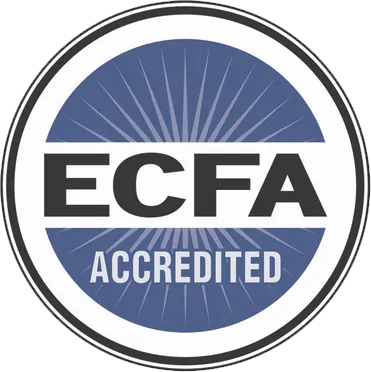
© 2023 CBE International. All rights reserved. Privacy Policy | Terms of Service Returns & Refunds
Luke 10:38-42 New American Standard Bible
Martha and mary.
38 Now as they were traveling along, He entered a village; and a woman named ( A ) Martha welcomed Him into her home. 39 And she had a sister called ( B ) Mary, who was also ( C ) seated at the Lord’s feet, and was listening to His word. 40 But ( D ) Martha was distracted with [ a ] all her preparations; and she came up to Him and said, “Lord, do You not care that my sister has left me to do the serving [ b ] by myself? Then tell her to help me.” 41 But the Lord answered and said to her, “ ( E ) Martha, Martha, you are ( F ) worried and distracted by many things; 42 ( G ) but only one thing is necessary; for ( H ) Mary has chosen the good part, which shall not be taken away from her.”
- Luke 10:40 Lit much service
- Luke 10:40 Lit alone
Cross references
- Luke 10:38 : Luke 10:40f; John 11:1, 5, 19ff, 30, 39; 12:2
- Luke 10:39 : Luke 10:42; John 11:1f, 19f, 28, 31f, 45; 12:3
- Luke 10:39 : Luke 8:35; Acts 22:3
- Luke 10:40 : Luke 10:38, 41; John 11:1, 5, 19ff, 30, 39; 12:2
- Luke 10:41 : Luke 10:38, 40; John 11:1, 5, 19ff, 30, 39; 12:2
- Luke 10:41 : Matt 6:25
- Luke 10:42 : Ps 27:4; John 6:27
- Luke 10:42 : Luke 10:39; John 11:1f, 19f, 28, 31f, 45; 12:3
John 12:1-11 New American Standard Bible
Mary anoints jesus.
12 ( A ) Therefore, six days before ( B ) the Passover, Jesus came to ( C ) Bethany where Lazarus was, whom Jesus had raised from the dead. 2 So they made Him a dinner there, and ( D ) Martha was serving; and Lazarus was one of those reclining at the table with Him. 3 ( E ) Mary then took a [ a ] pound of very expensive ( F ) perfume of pure nard, and anointed the feet of Jesus and wiped His feet with her hair; and the house was filled with the fragrance of the perfume. 4 But ( G ) Judas Iscariot, one of His disciples, the one who intended to [ b ] betray Him, *said, 5 “Why was this perfume not sold for three hundred [ c ] denarii and the proceeds given to poor people ?” 6 Now he said this, not because he cared about the poor, but because he was a thief, and as he ( H ) kept the money box, he used to [ d ] steal from ( I ) what was put into it. 7 Therefore Jesus said, “Leave her alone, so that she may keep it [ e ] for ( J ) the day of My burial. 8 ( K ) For you always have the poor with you, but you do not always have Me.”
9 The ( L ) large crowd of the Jews then learned that He was there; and they came, not on account of Jesus only, but so that they might also see Lazarus, ( M ) whom He raised from the dead. 10 But the chief priests planned to put Lazarus to death also, 11 because ( N ) on account of him ( O ) many of the Jews were going away and were believing in Jesus.
- John 12:3 I.e., a Roman pound, about 12 oz. or 340 gm
- John 12:4 Or hand Him over
- John 12:5 The denarius was a day’s wages for a laborer
- John 12:6 Lit pilfer
- John 12:7 Or in view of
- John 12:1 : John 12:1-8: Matt 26:6-13; Mark 14:3-9; Luke 7:37-39
- John 12:1 : John 11:55; 12:20
- John 12:1 : Matt 21:17; John 11:43f
- John 12:2 : Luke 10:38
- John 12:3 : Luke 7:37f; John 11:2
- John 12:3 : Mark 14:3
- John 12:4 : John 6:71
- John 12:6 : John 13:29
- John 12:6 : Luke 8:3
- John 12:7 : John 19:40
- John 12:8 : Deut 15:11; Matt 26:11; Mark 14:7
- John 12:9 : Mark 12:37; John 12:12 mg
- John 12:9 : John 11:43f; 12:1, 17f
- John 12:11 : John 11:45f; 12:18
- John 12:11 : John 7:31; 11:42
New American Standard Bible®, Copyright © 1960, 1971, 1977, 1995, 2020 by The Lockman Foundation . All rights reserved.

Bible Gateway Recommends


IMAGES
VIDEO
COMMENTS
Luke 10:38-42. New Living Translation. Jesus Visits Martha and Mary. 38 As Jesus and the disciples continued on their way to Jerusalem, they came to a certain village where a woman named Martha welcomed him into her home. 39 Her sister, Mary, sat at the Lord's feet, listening to what he taught. 40 But Martha was distracted by the big dinner ...
In the Bible, two of the most well-known mentions of Mary and Martha are found in the Gospel of Luke and the Gospel of John. Using these two passages primarily, here are six things to know about Mary and Martha in the Bible. 1. They were loved by Jesus. "Now Jesus loved Martha and her sister and Lazarus ."
The lesson has two primary centers: 1) The Supper: The visit of Jesus and His disciples ( Luke 10:38-42) 2) The Funeral: The sickness and death of Lazarus ( John 11:20-32) 1. The Supper: the Visit of Jesus and His Disciples ( Luke 10:38-42) Jesus felt a close bond with the family living at Bethany. A beautiful friendship existed between Jesus ...
11 Now a man named Lazarus was sick. He was from Bethany, the village of Mary and her sister Martha. 2 (This Mary, whose brother Lazarus now lay sick, was the same one who poured perfume on the Lord and wiped his feet with her hair.) 3 So the sisters sent word to Jesus, "Lord, the one you love is sick.". 4 When he heard this, Jesus said ...
In Luke 10:38-42, Martha works hard to welcome Jesus to her home. Her sister, Mary of Bethany, simply sits at his feet and listens. Both Mary and Martha serve, yet Mary understands the priority and necessity of choosing to abide with Christ. Sitting at the feet of Jesus prevents Mary's service from becoming distracted and unhealthy.
The Bible Story of Mary and Martha comes from Chapter 10 of the Gospel of Luke. Mary and Martha, who are sisters, open their home to Jesus as he travels with his disciples. As Martha hurries to ensure the preparations, Mary simply sits at the feet of Jesus and listens to the wisdom of Christ. Mary and Martha are two sisters with incredibly ...
The New Testament mentions Martha, a disciple of Jesus, three times (Luke 10:38-42; John 11:1-44; 12:2). Her actions, statements, and profession of faith reveal a remarkable woman who grows into her role as one of Jesus's most devoted followers. This mid-17th-century painting by the Dutch artist Johannes Vermeer depicts Jesus's visit to ...
Jesus visits Martha & Mary. House plan of a well-to-do family in 1st century Jerusalem; the house of Martha and Mary would have been smaller, but built along a similar plan. Martha and Mary were two sisters who offered hospitality to Jesus and the people traveling with him. They had a brother, Lazarus. The three young people were friends of Jesus.
Jesus tells the truth about what is going on—Mary has put her life in my hands, and she need do nothing more. In doing so, he defends Mary and converts Martha. Christ does not need to hector ...
John 11:1-8, 14-16: 1 Now a certain man was ill, Lazarus of Bethany, the village of Mary and her sister Martha. 2 It was Mary who anointed the Lord with ointment and wiped his feet with her hair, whose brother Lazarus was ill. 3 The sisters sent to him, saying, "Lord, he whom you love is ill.". 4 But when Jesus heard it he said, "This ...
2. To learn from Jesus, is more important than to perform activities. Martha was worried about serving a banquet worthy of Jesus, while Mary enjoyed the spiritual banquet of listening to Jesus (Lk 10:38-42). 3. The desire to help a person can be expressed in an inappropriate manner that hinders instead of helping.
In the story of Mary and Martha, here are four lessons we learn from Martha. 1. Go straight to Jesus with your problem. When Martha demanded that Jesus tell her sister to come and help her, He said, "Martha, Martha, you are worried and upset about many things, but only one thing is needed.
Martha, who had been "distracted by her many tasks" (Luke 10:40) goes into the room where Jesus is speaking and demands that Jesus tell Mary to help her! But instead of doing as Martha asks, Jesus reminds her that she is worried and distracted by many things, but "there is need of only one thing." (10:42). Mary had chosen the better ...
Mary and Martha were Jesus' good friends. Martha stayed busy supplying her guests with things that made their visit more comfortable. She should be commended for seeing to the important needs of others. But Jesus commended her sister Mary. Jesus noted, in effect, that Martha stayed busy with form, but that Mary concentrated on substance.
Jesus at the home of Martha and Mary by Tintoretto, 16th century. Jesus at the home of Martha and Mary (also referred to as Christ in the House of Martha and by other variant names) refers to a Biblical episode in the life of Jesus in the New Testament which appears only in Luke's Gospel (Luke 10:38-42), immediately after the Parable of the Good Samaritan (Luke 10:25-37).
Answer. Martha is a significant New Testament figure, a personal friend of Jesus, and someone with whom many women today identify. She lived in Bethany with her sister, Mary, and her brother, Lazarus, whom Jesus raised from the dead ( John 11:1-15, 43-44 ). We meet Martha three times in the Bible, and each event helps to build a profile of ...
Jesus met Mary, Martha, and Lazarus through their mutual friendship with each other. Here are the steps of how they met: Step 1: Mary, Martha, and Lazarus lived in the town of Bethany. Step 2: Jesus often visited Bethany while traveling with his disciples. Step 3: Mary, Martha, and Lazarus welcomed Jesus into their home.
Jesus had just finished teaching the parable of the Good Samaritan (Luke 10:30-37) and now arrived with His disciples to Mary and Martha's house. We are unsure if they were expecting a visit or if it was a surprise to open the door and find Jesus there. What we do see in the passage are two different reactions by the two sisters.
Martha's confession is held up as the equivalent of Peter's confession in the Synoptics and John's purpose statement in 20:31. Likewise, in Luke 10:38-42, according to the traditional interpretation, no words come from Mary, apparently setting a positive example by her actions alone. Martha aggressively pursues Jesus for a solution to ...
Mary looked for peace from Jesus—but her sister, Martha, let stress, worry, and responsibilities distract her from the one thing she really needed: spending ...
Easter Sunday Celebration Pastor Rob He is Risen!
Luke 11. John 12:1-11. New American Standard Bible. Mary Anoints Jesus. 12 Therefore, six days before the Passover, Jesus came to Bethany where Lazarus was, whom Jesus had raised from the dead. 2 So they made Him a dinner there, and Martha was serving; and Lazarus was one of those reclining at the table with Him. 3 Mary then took a [ a]pound of ...